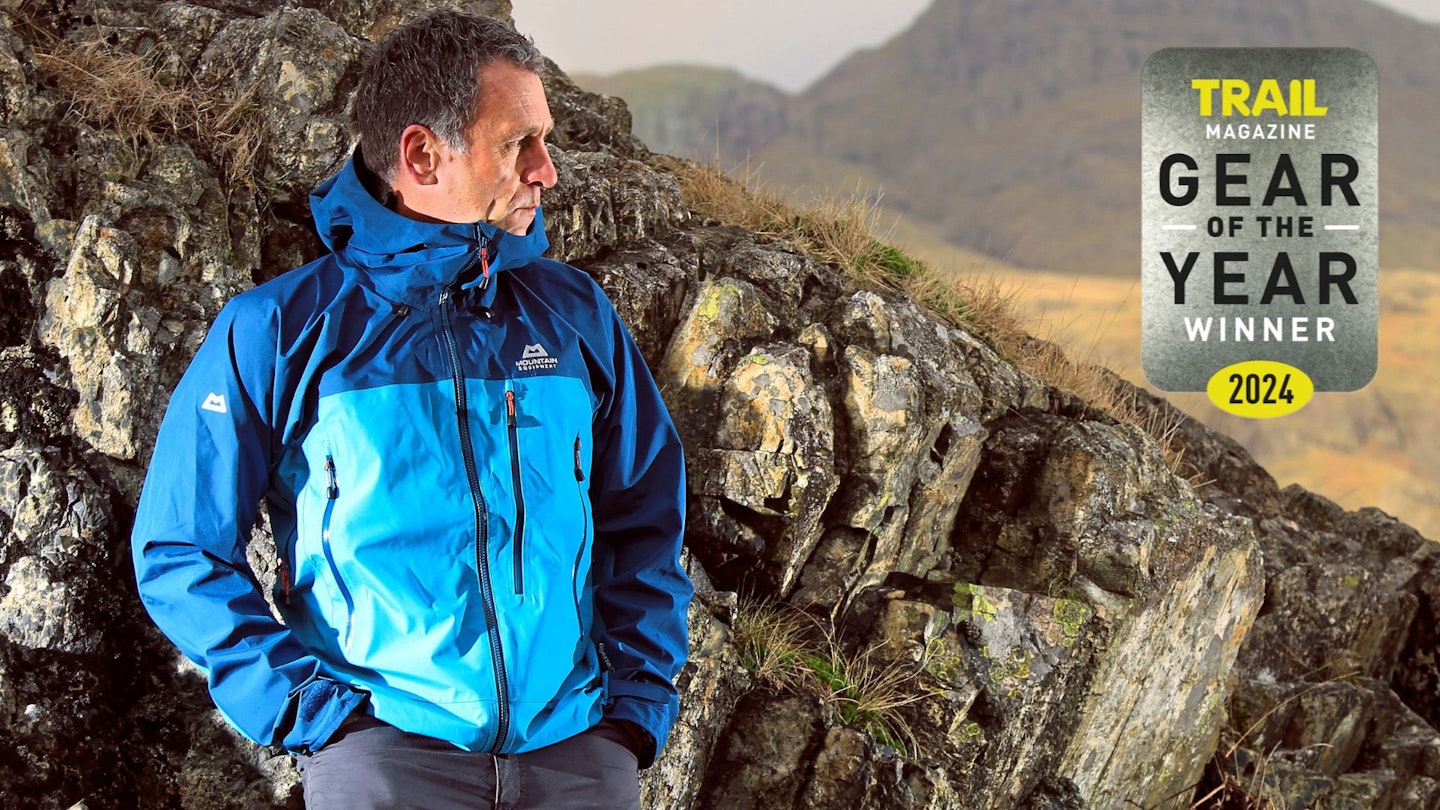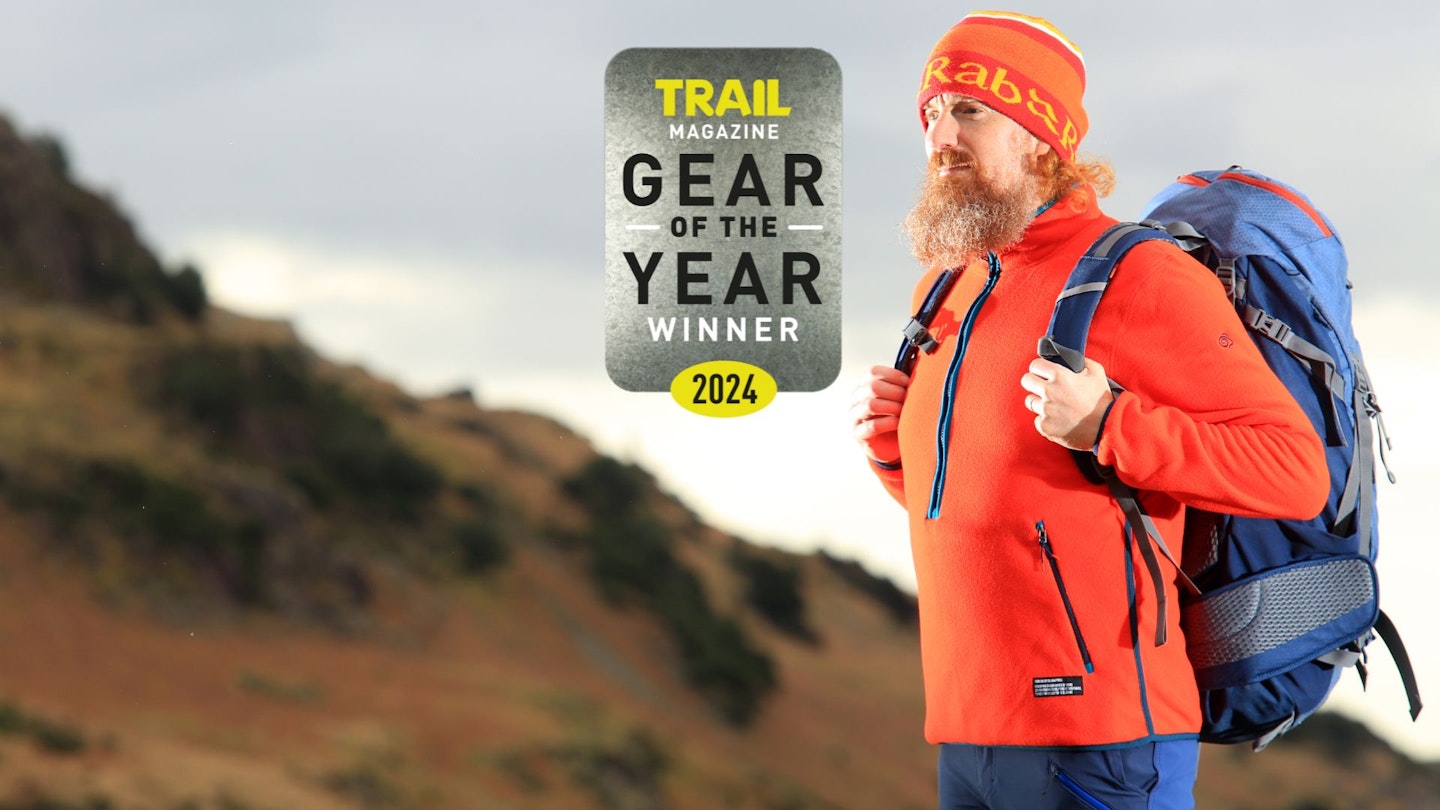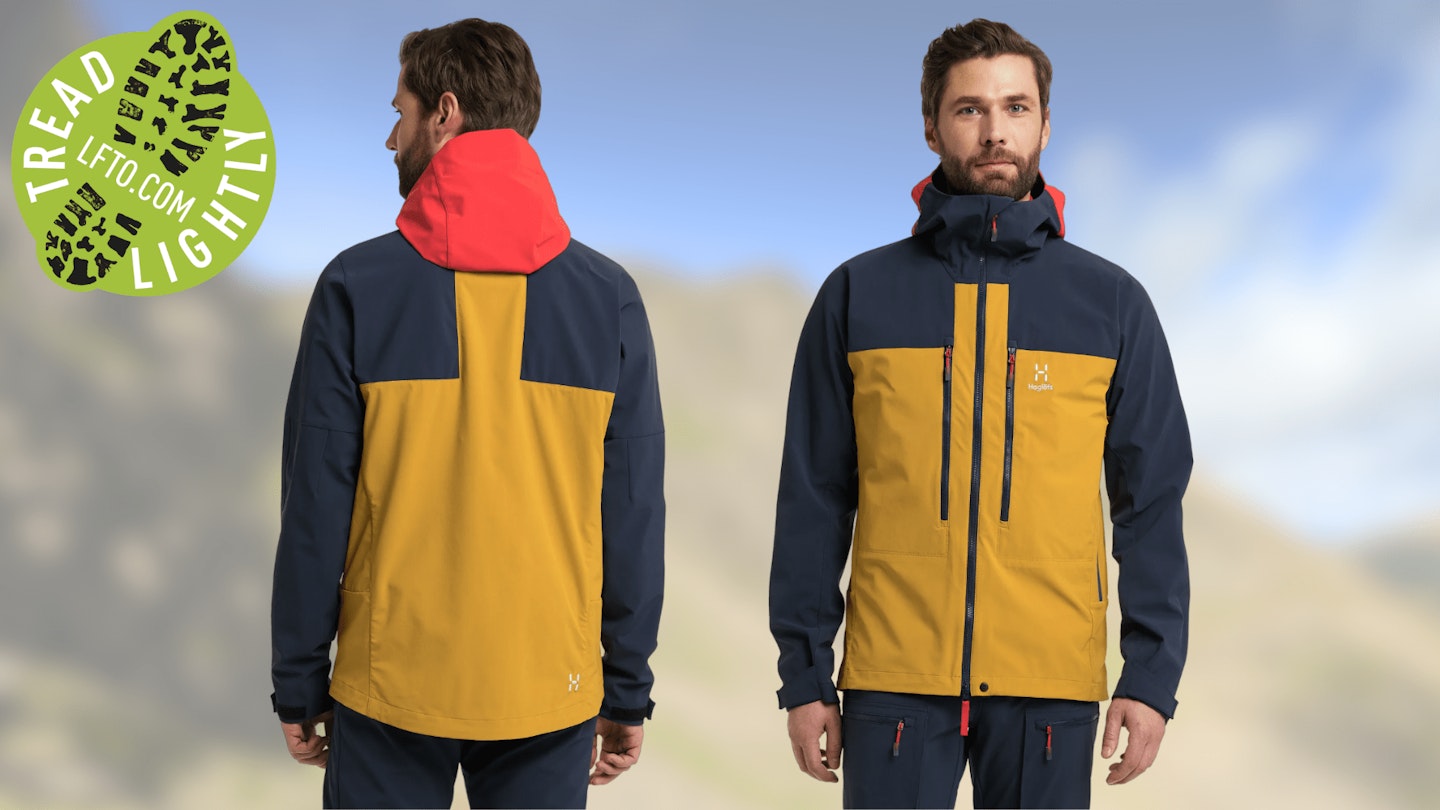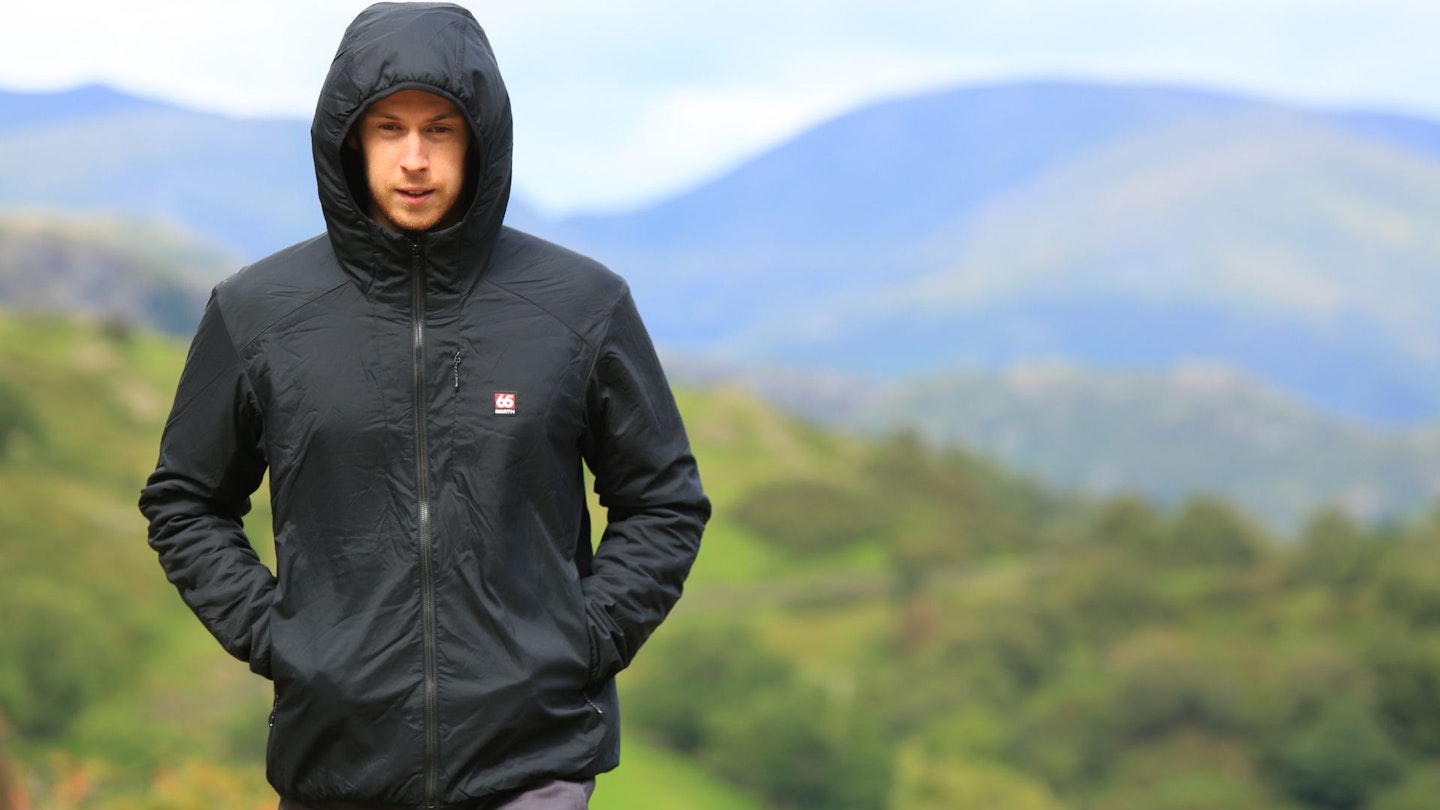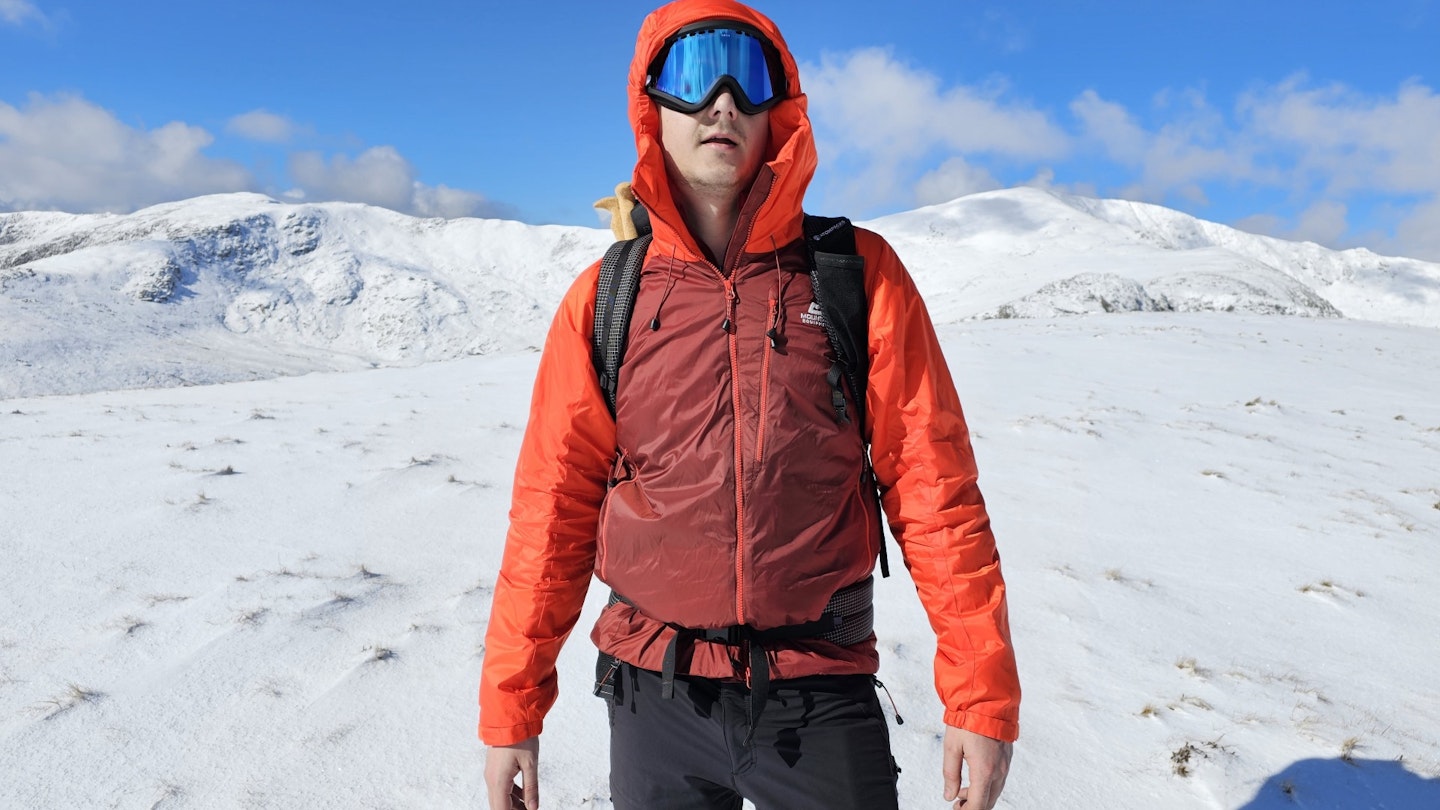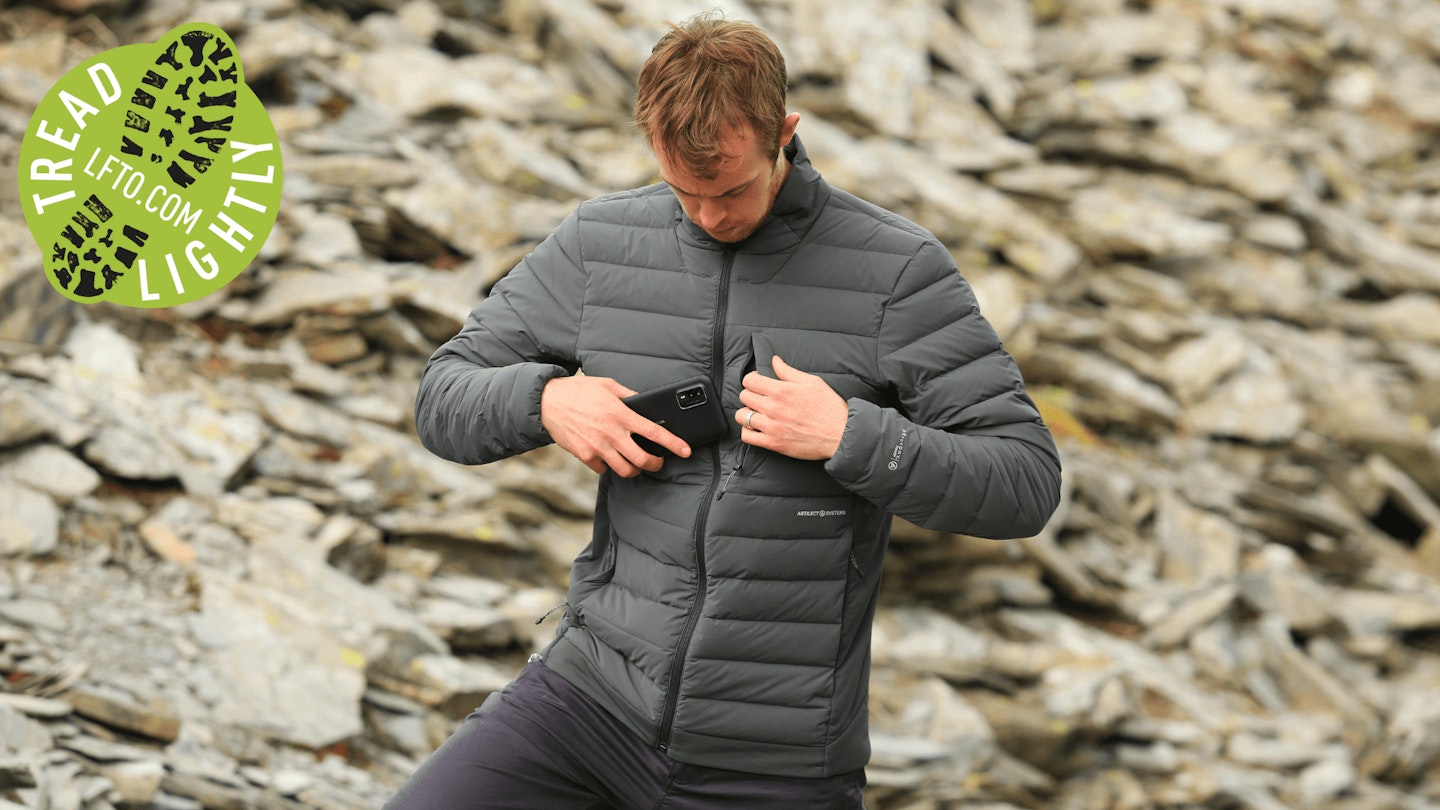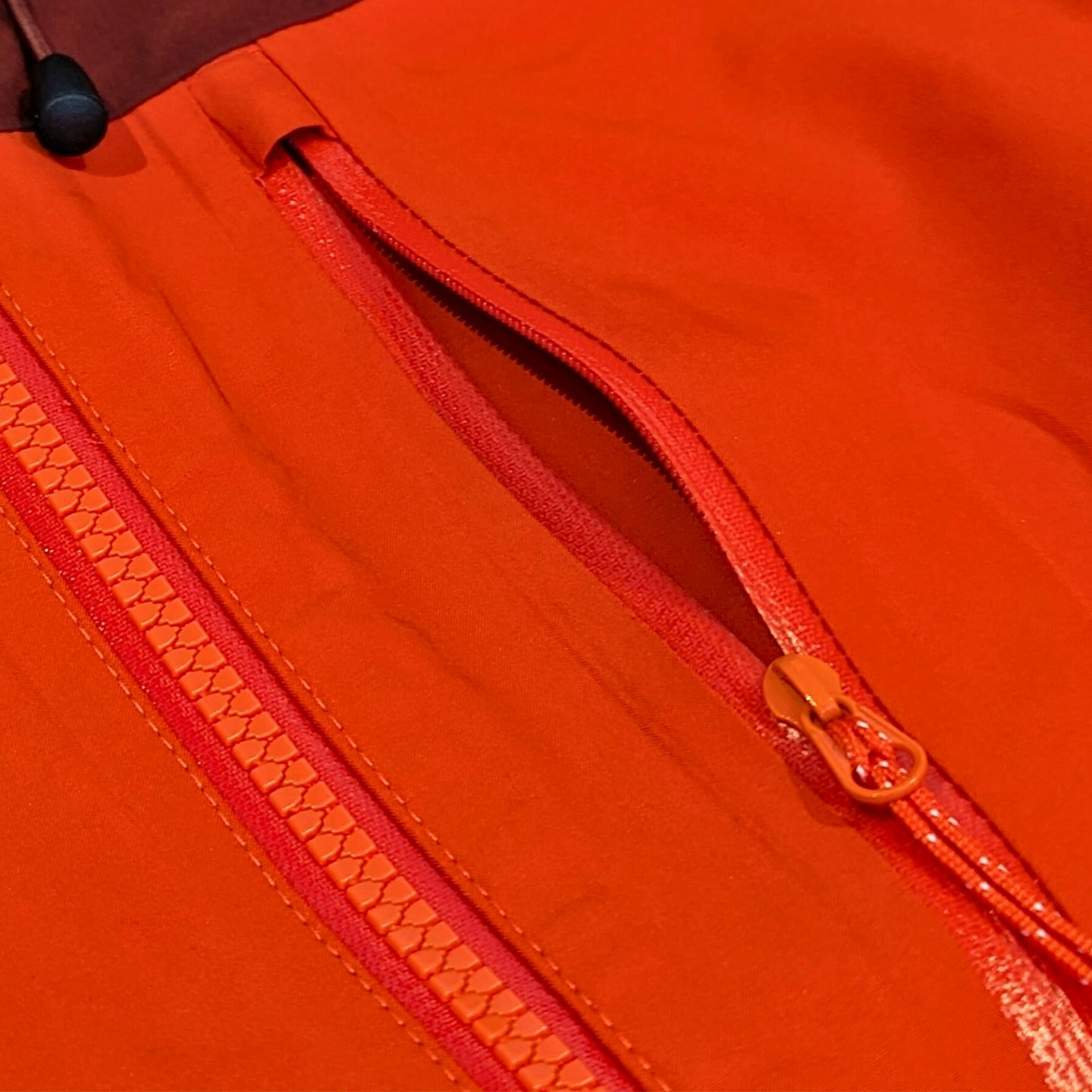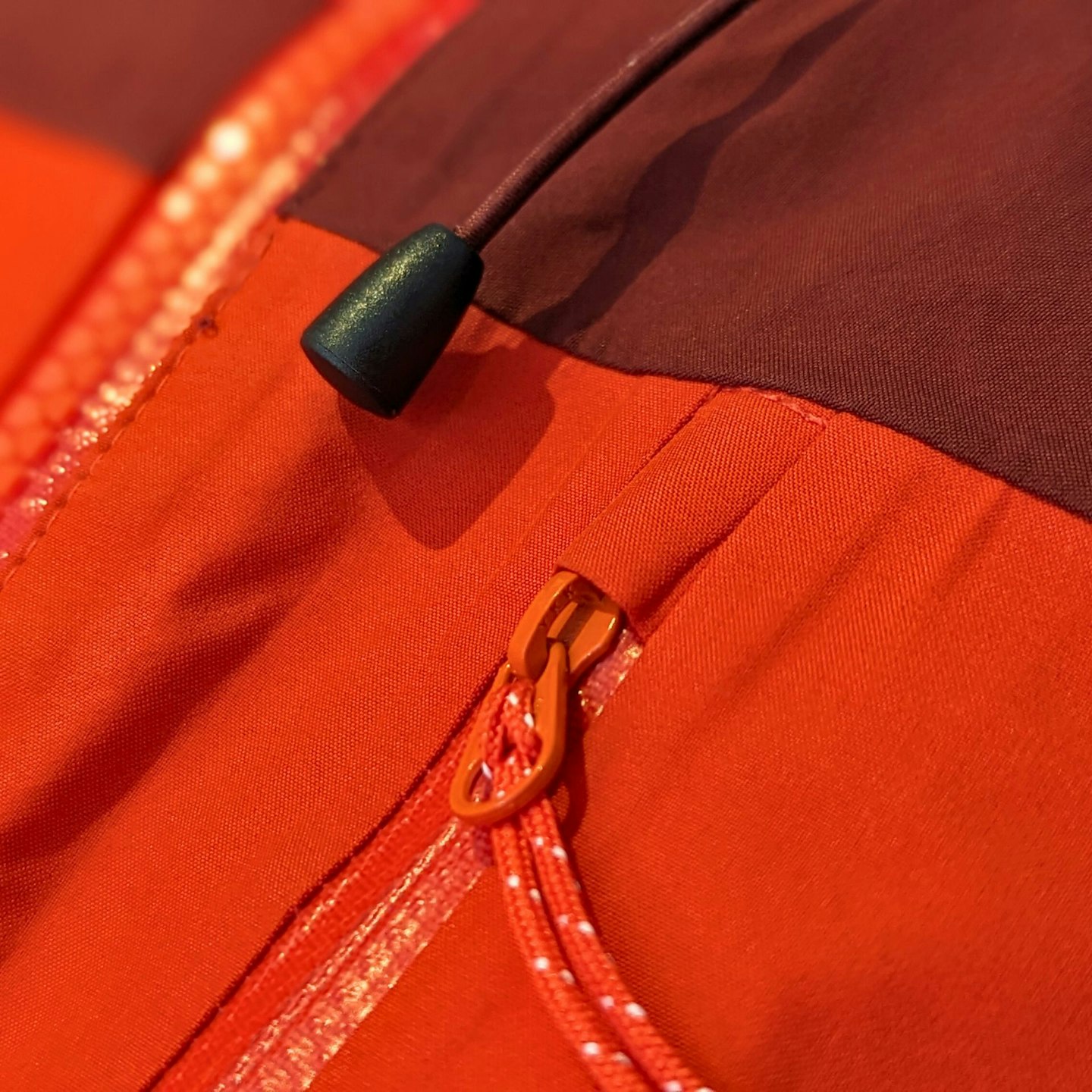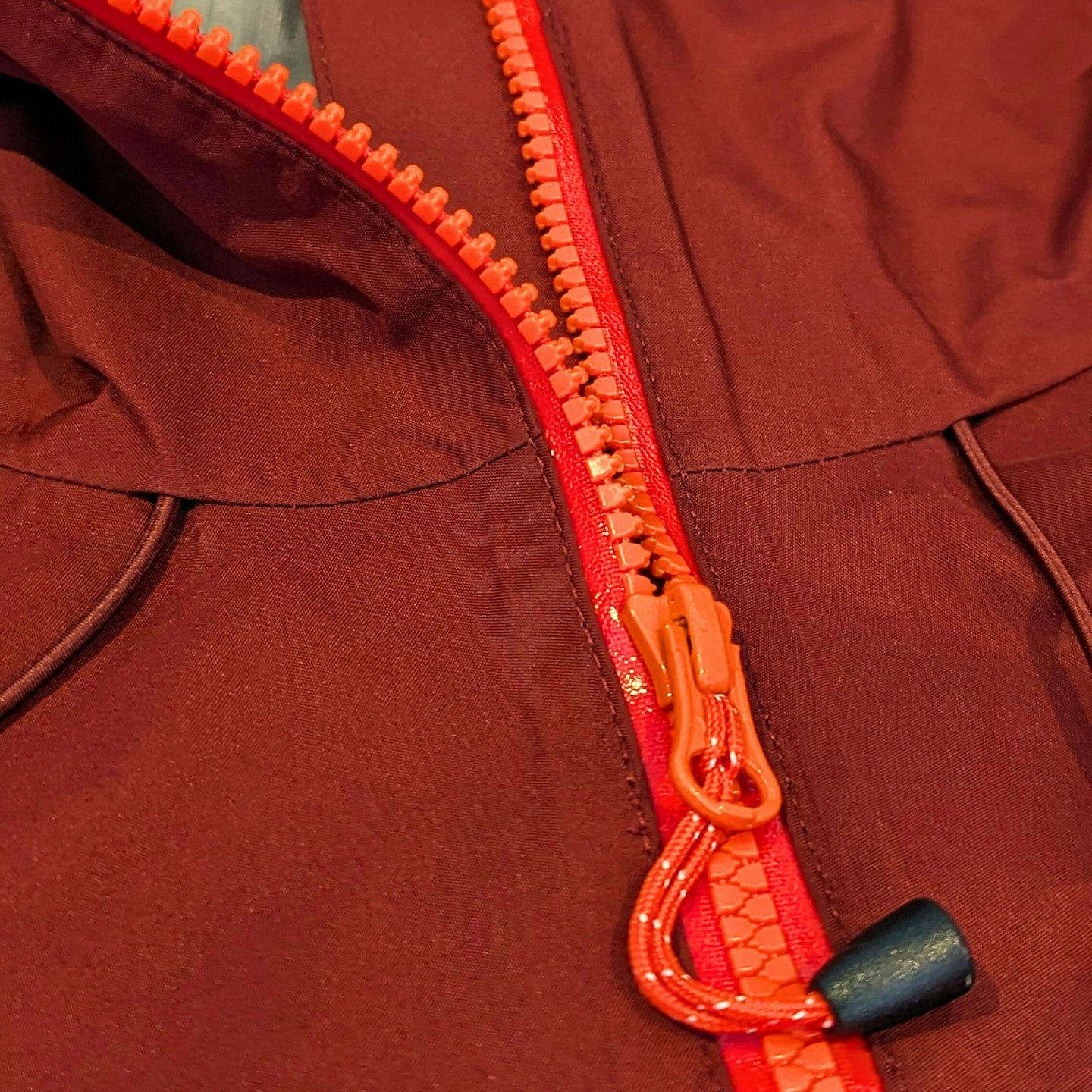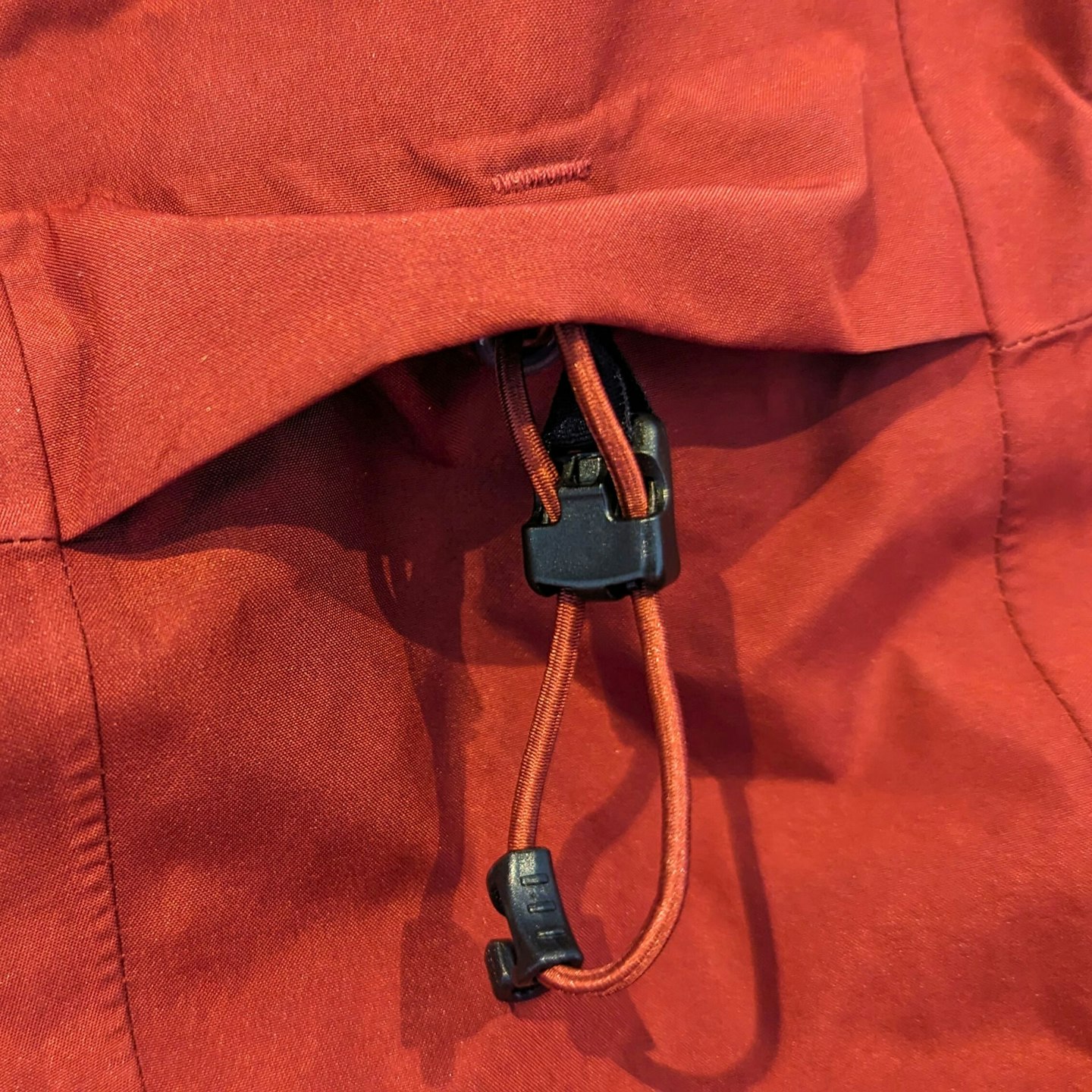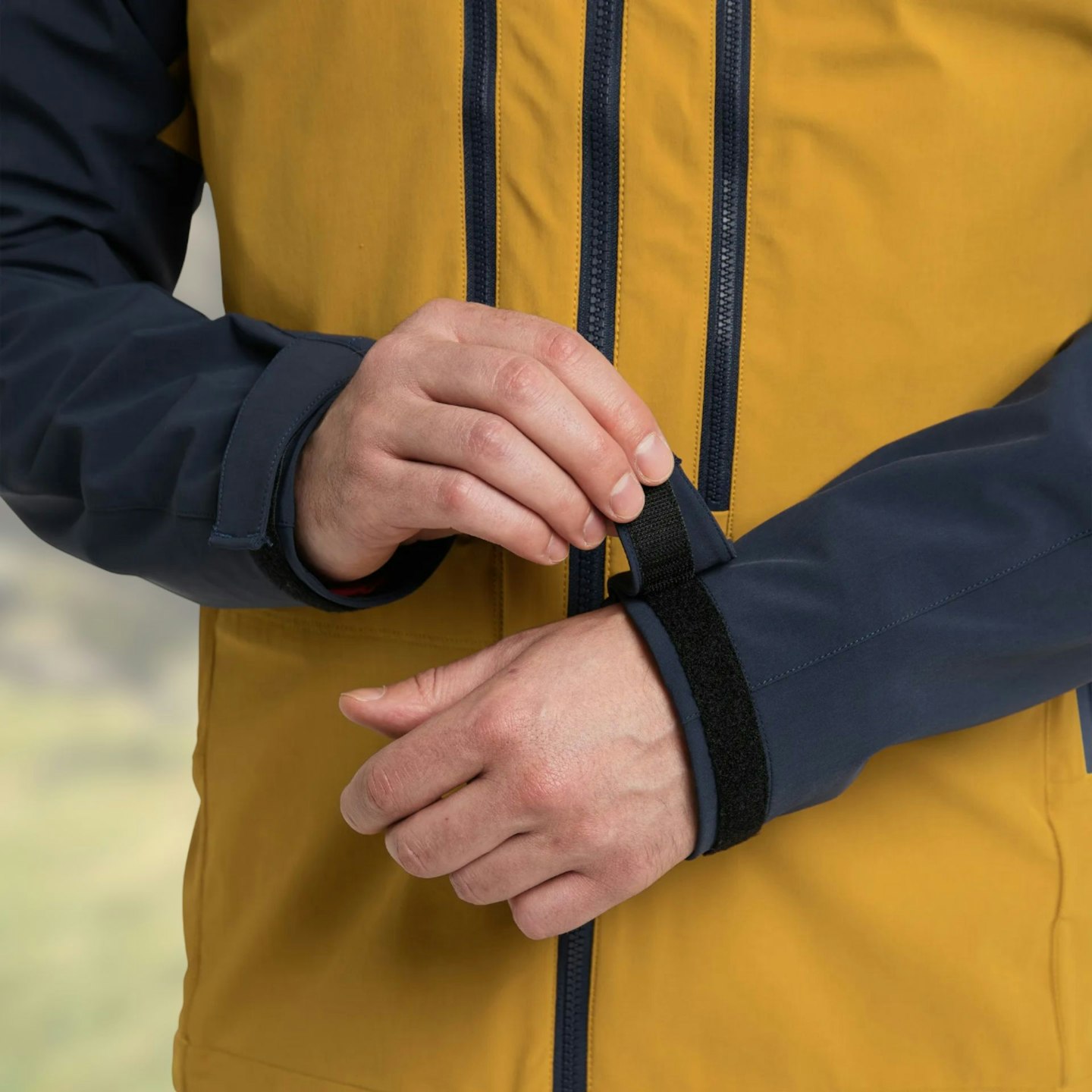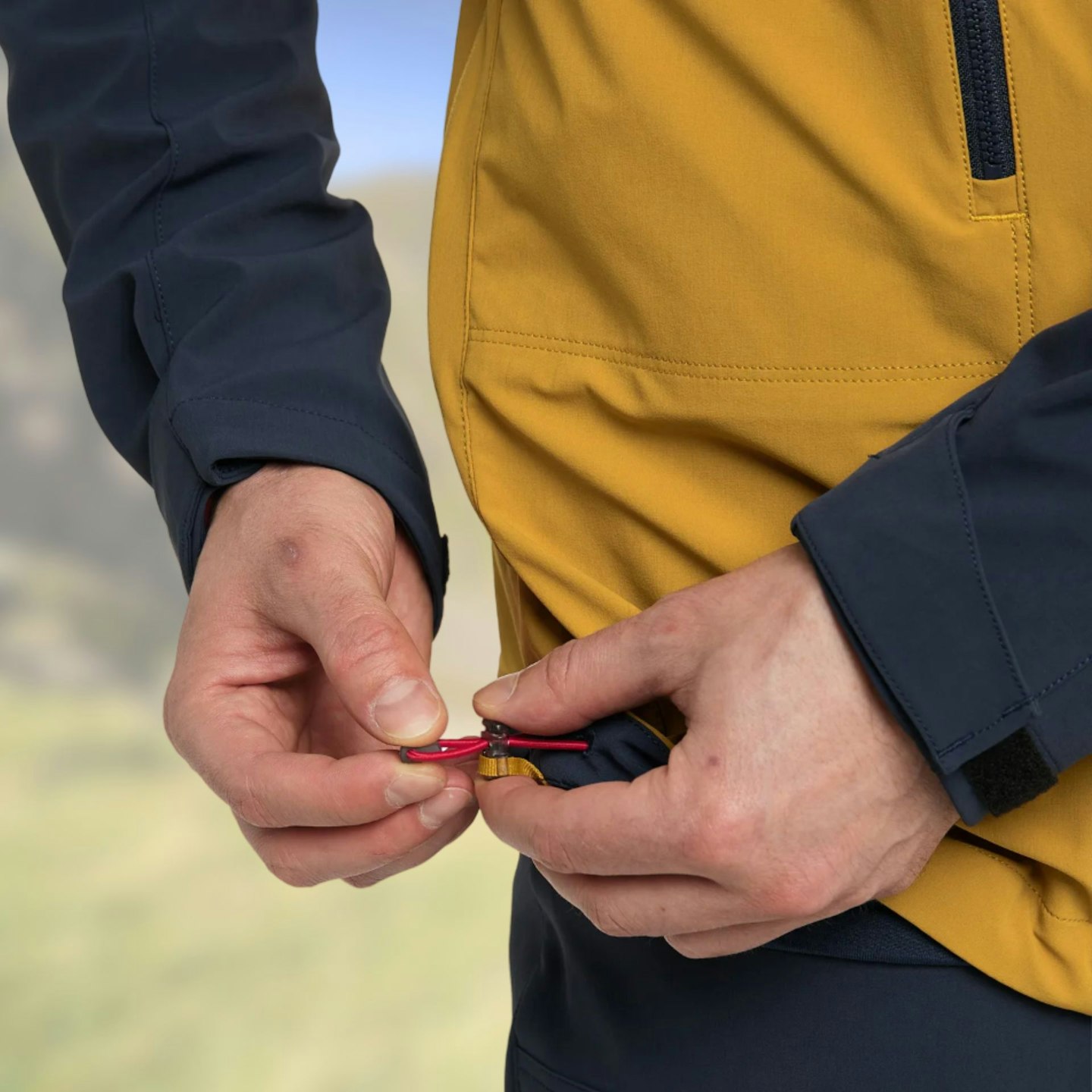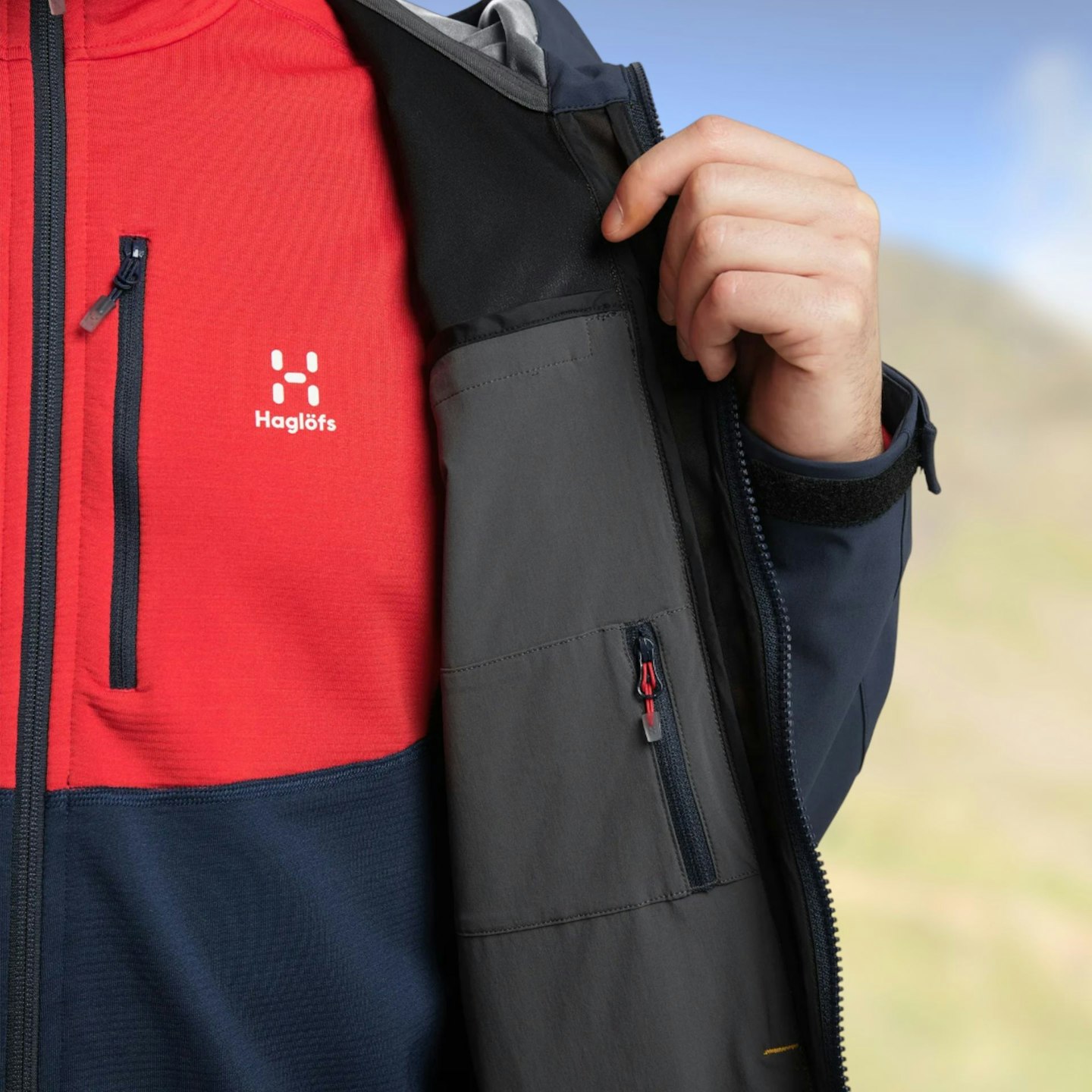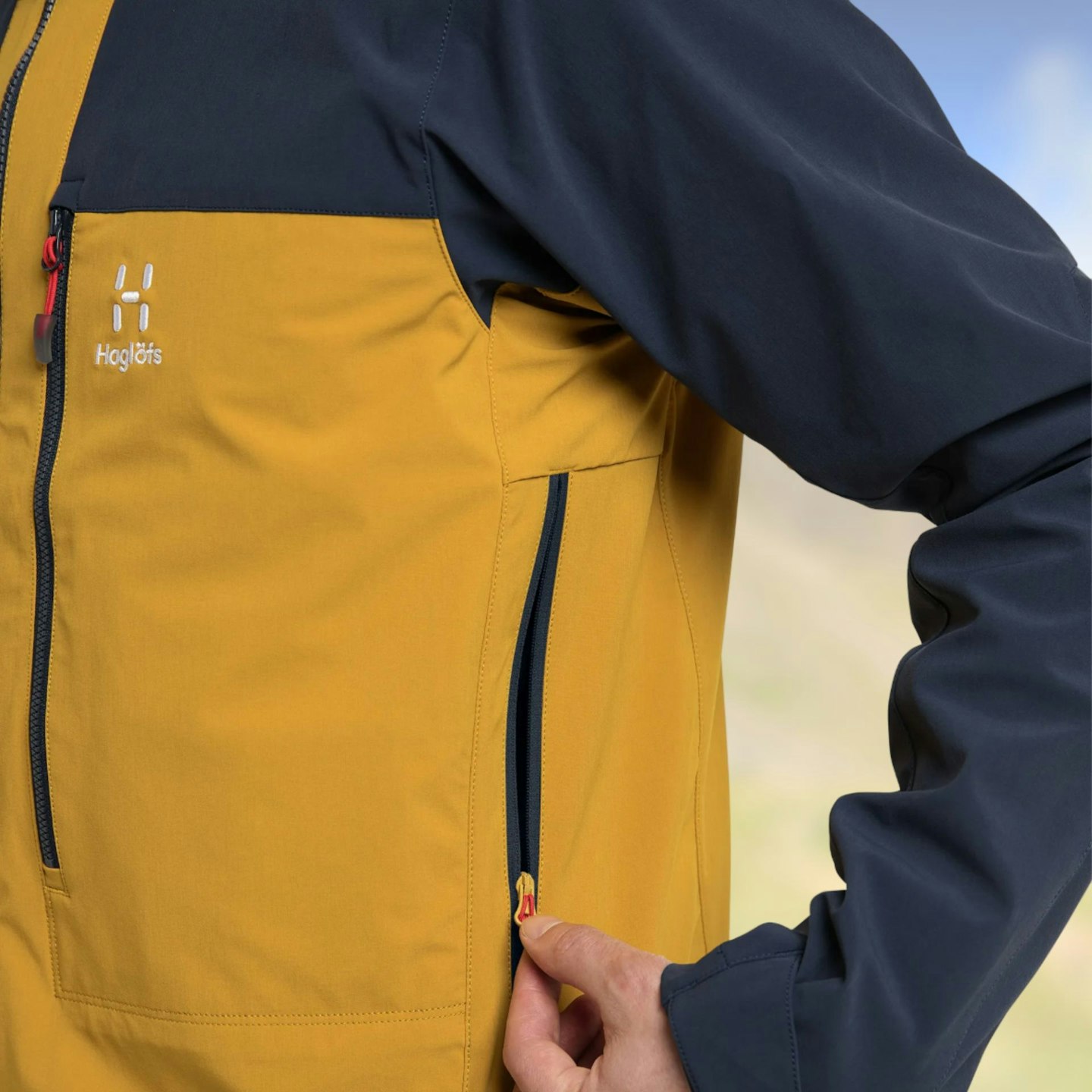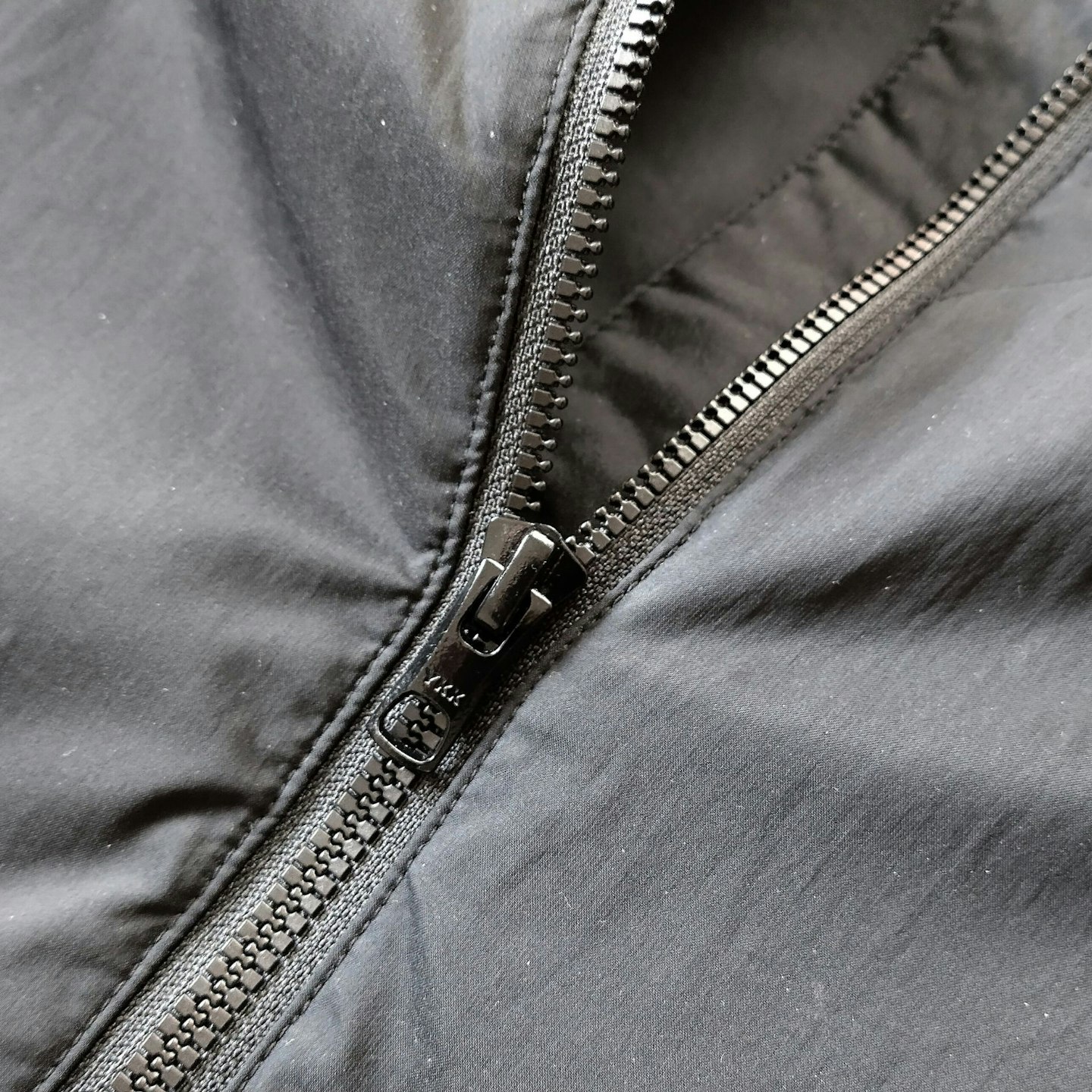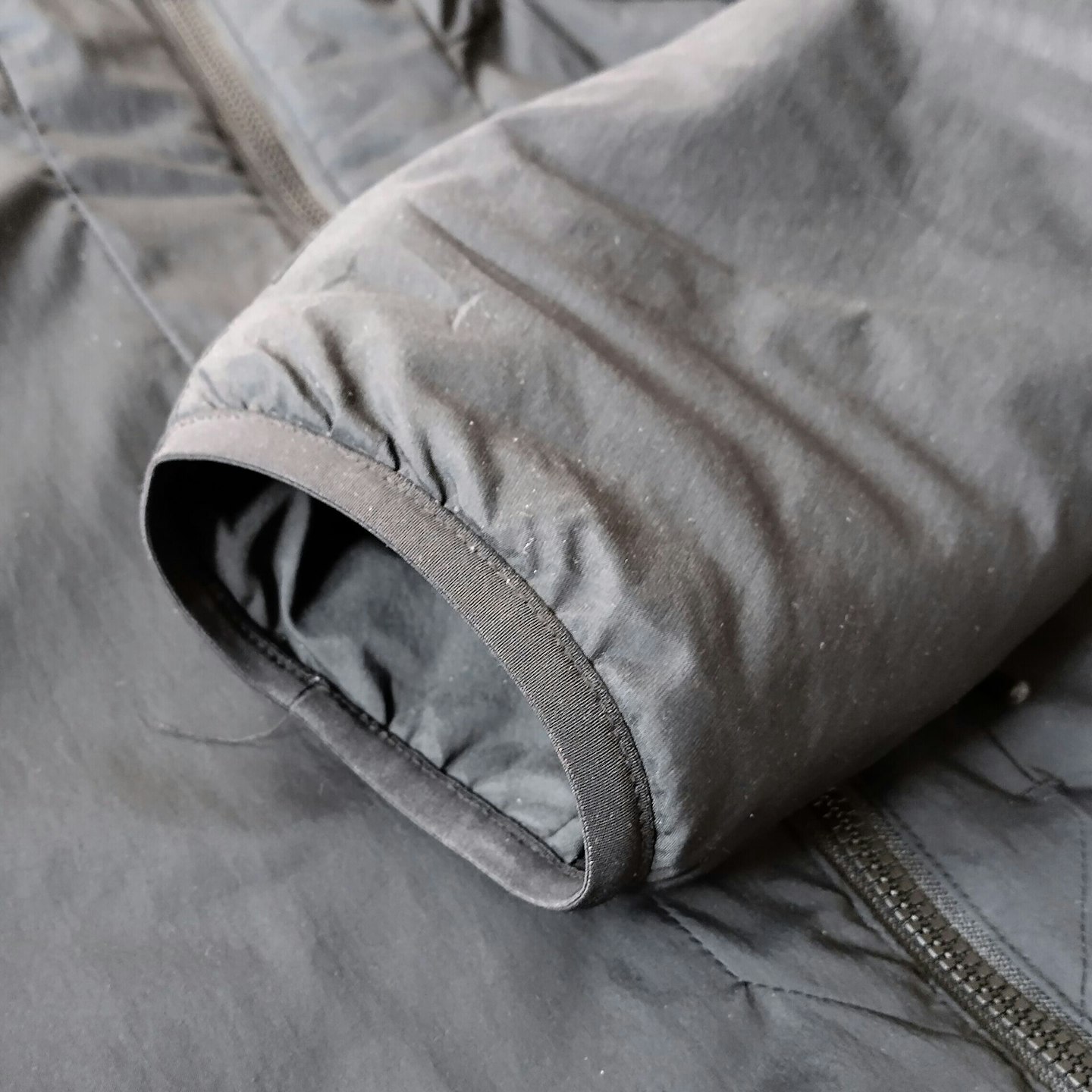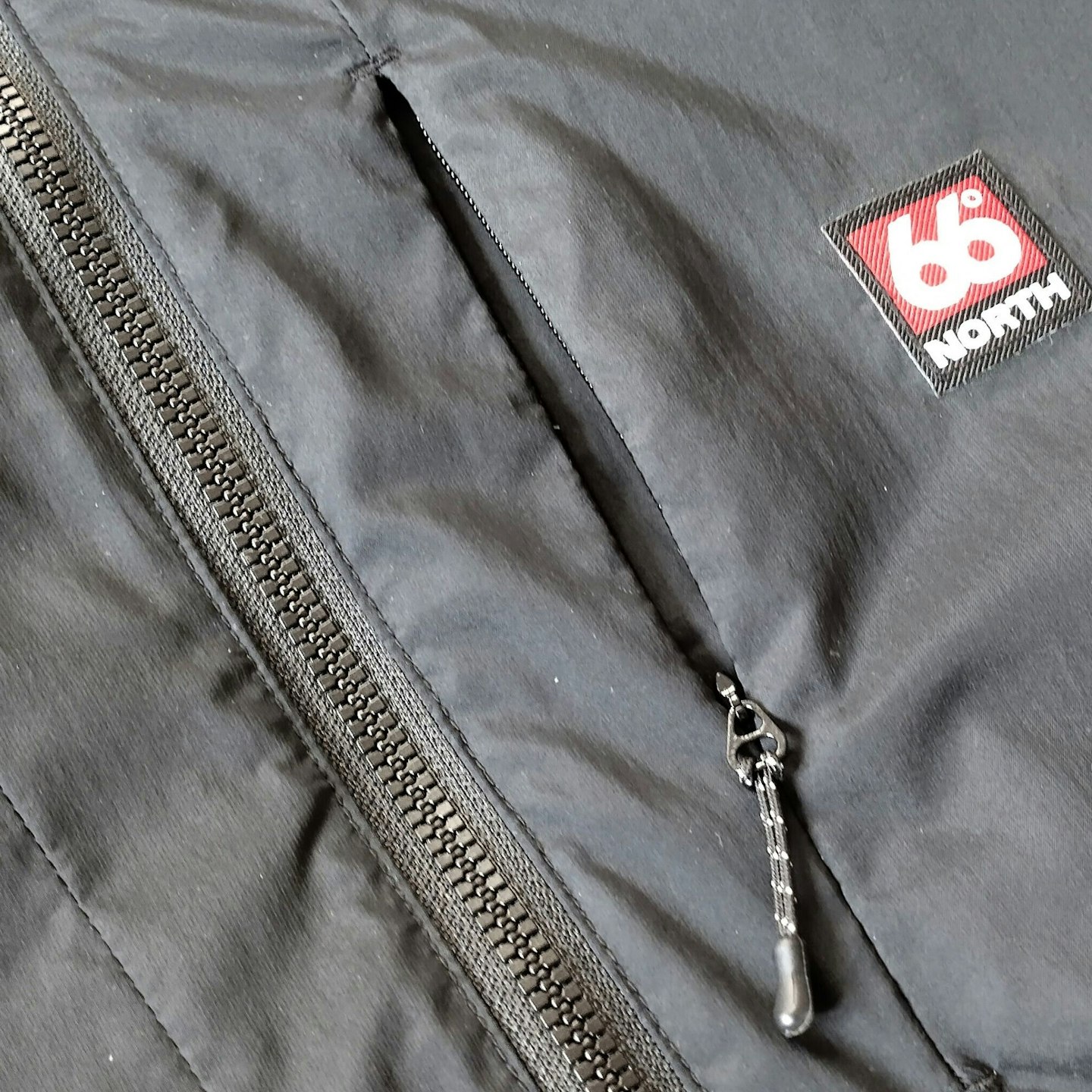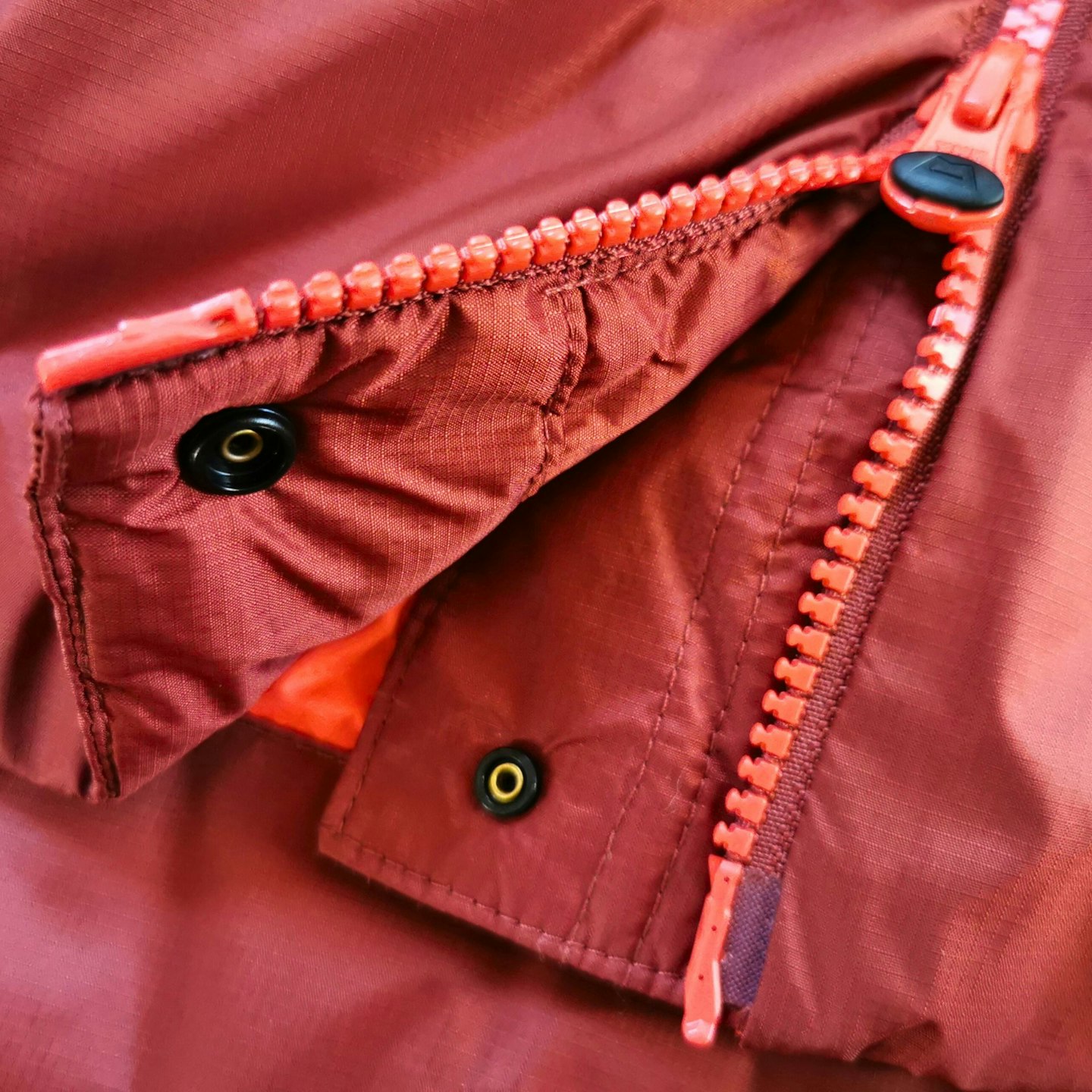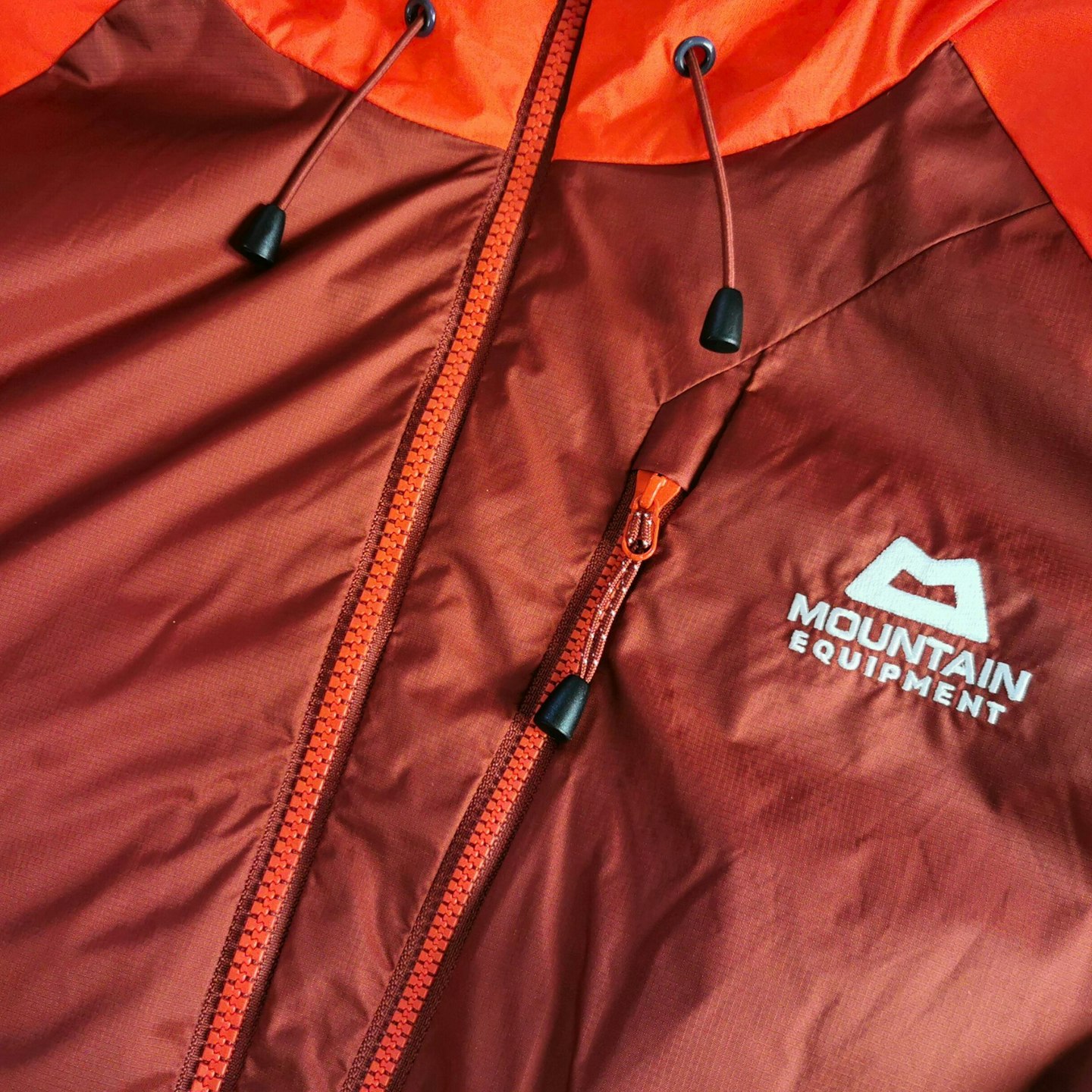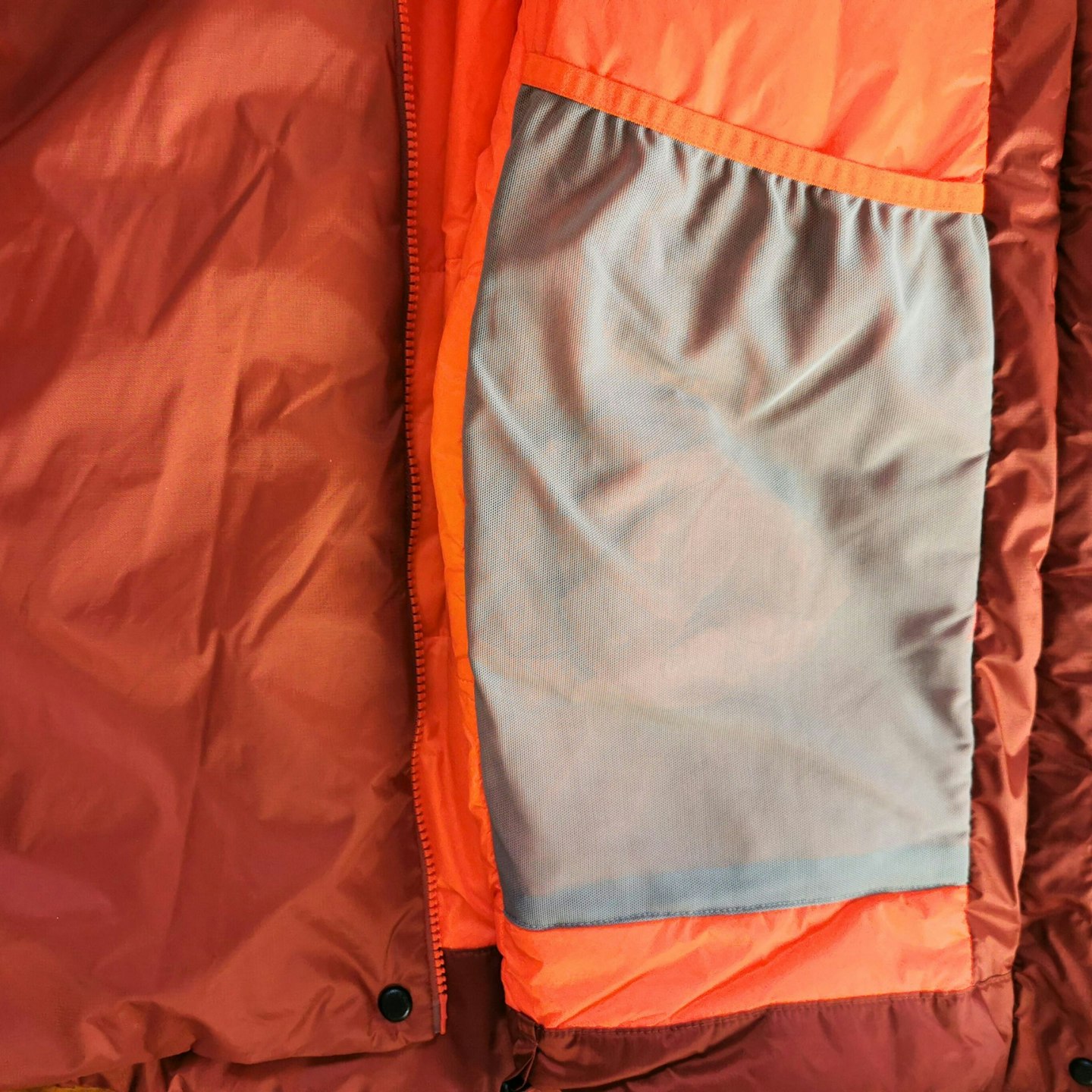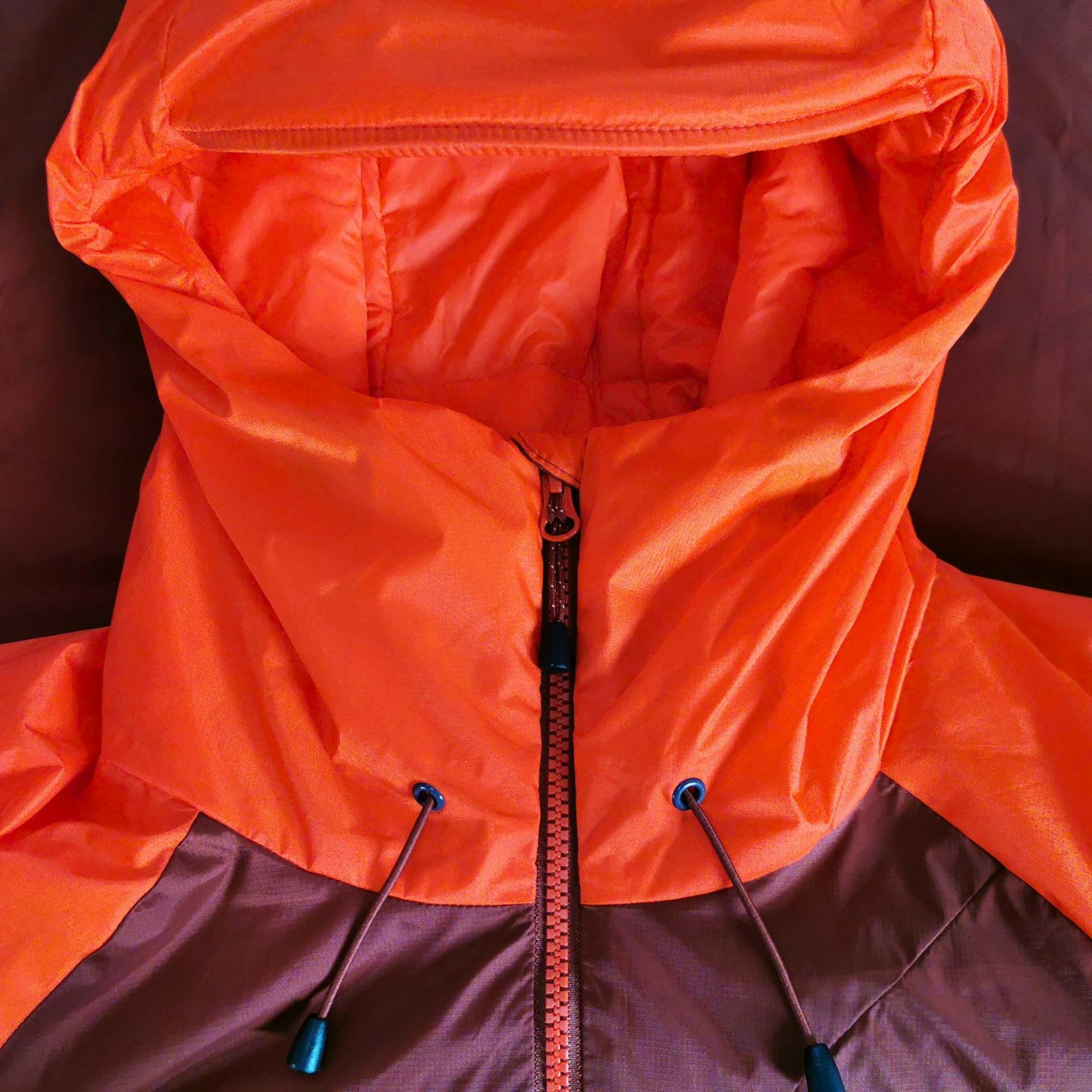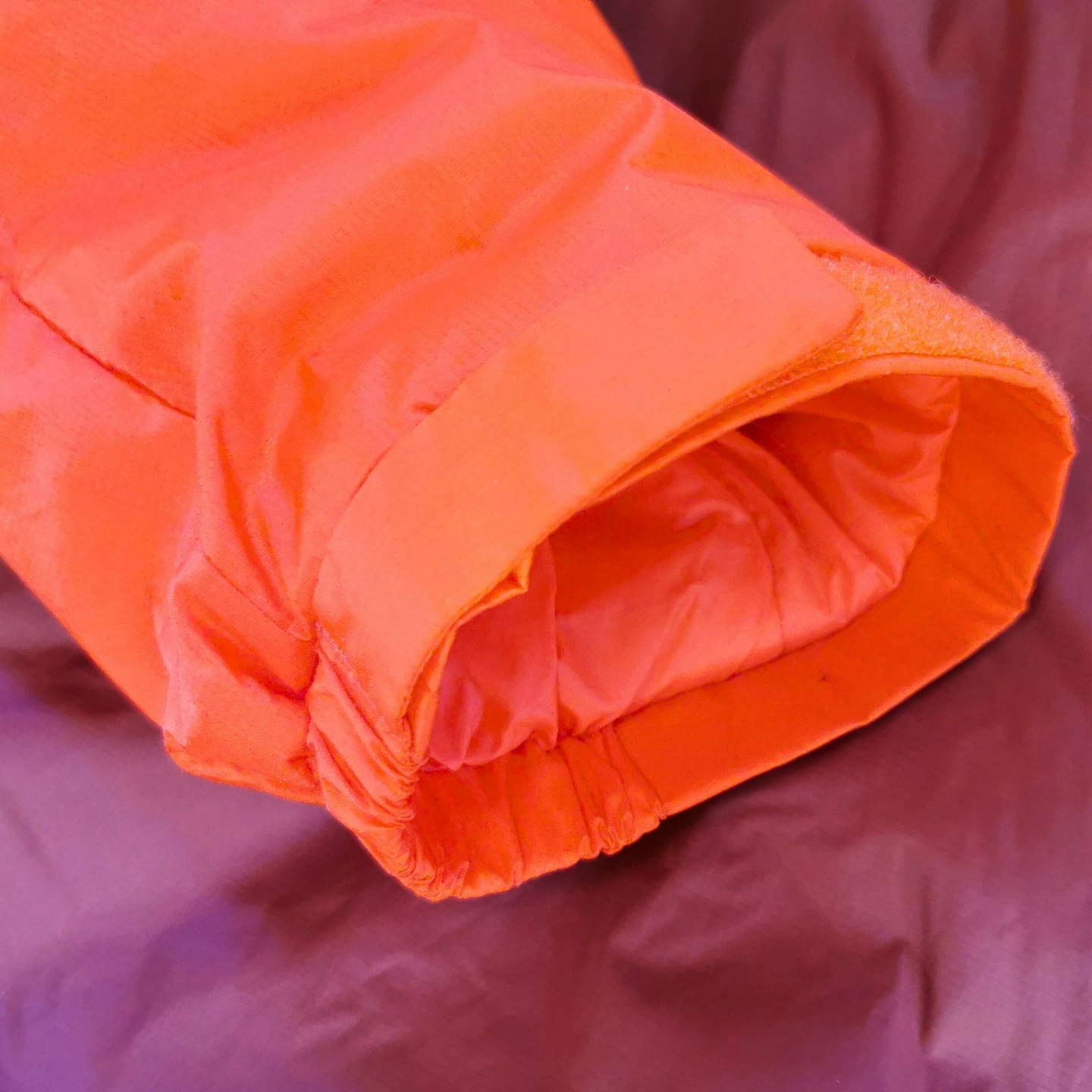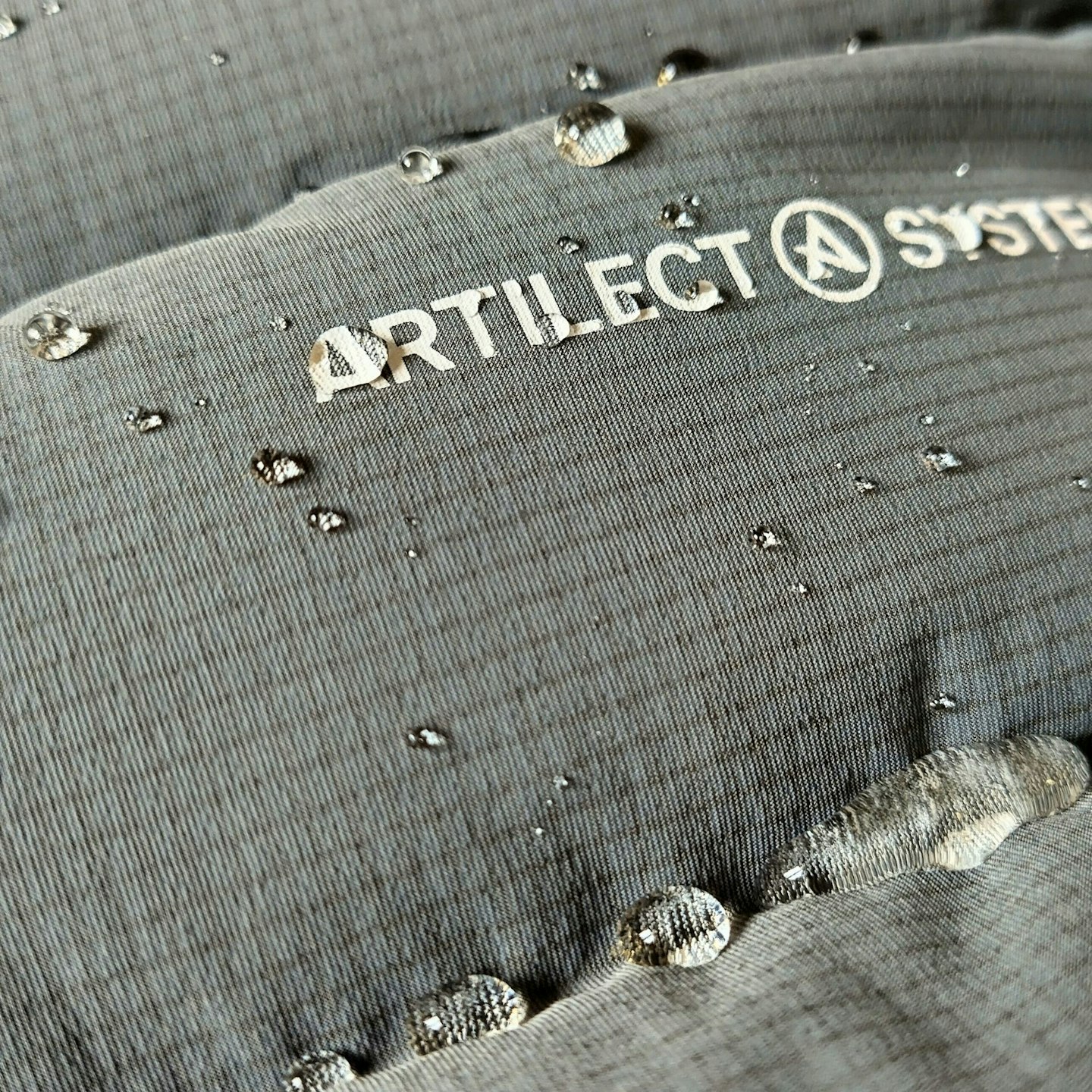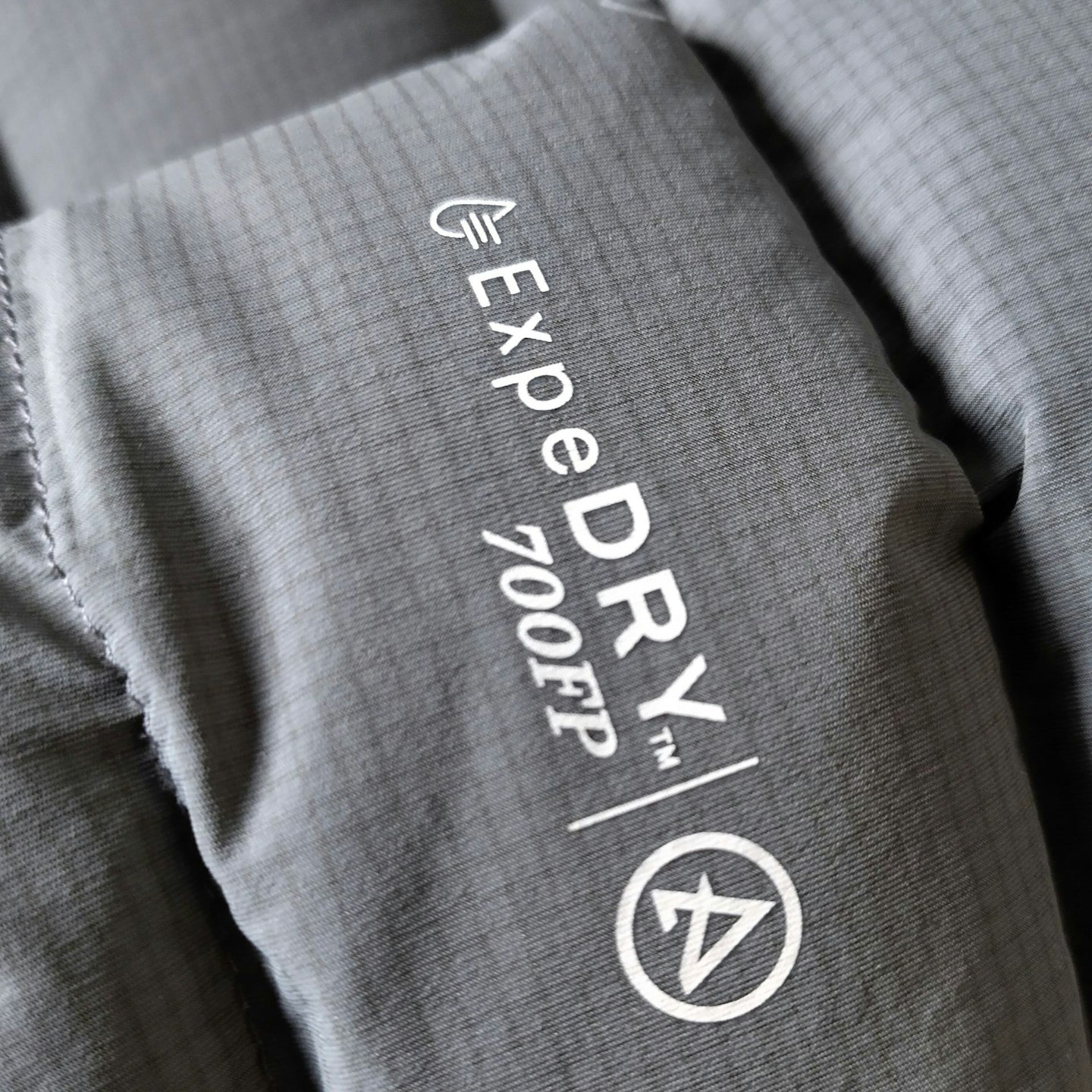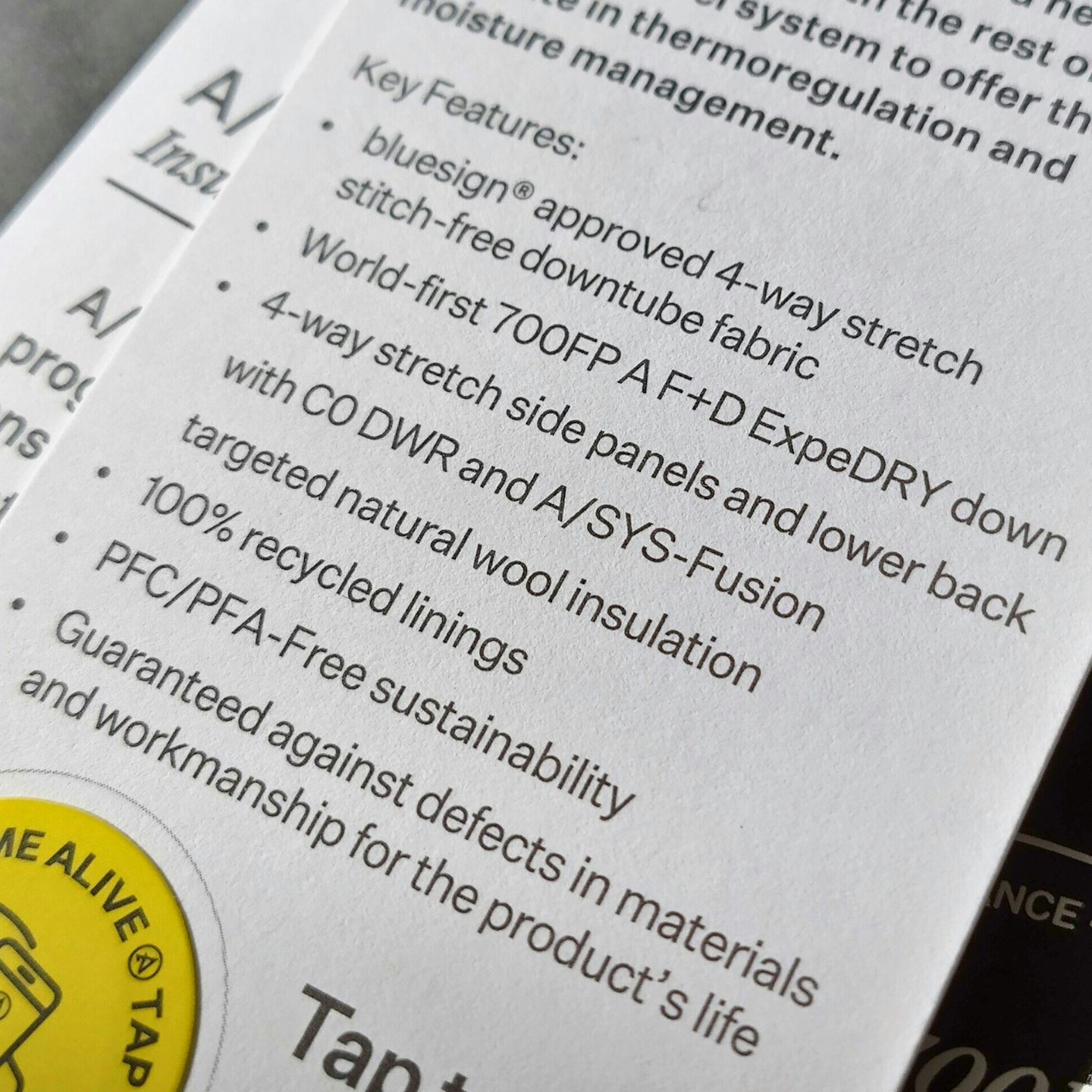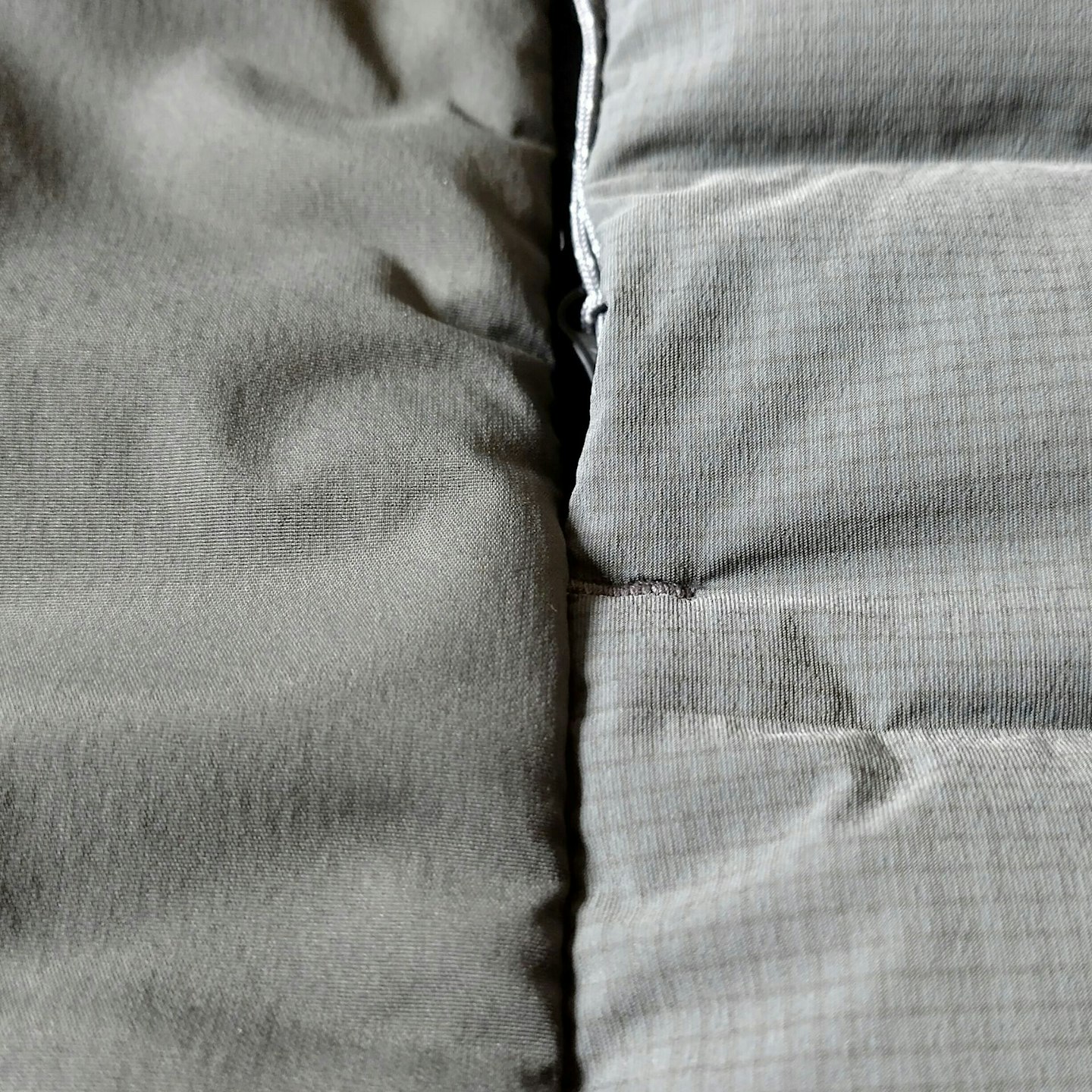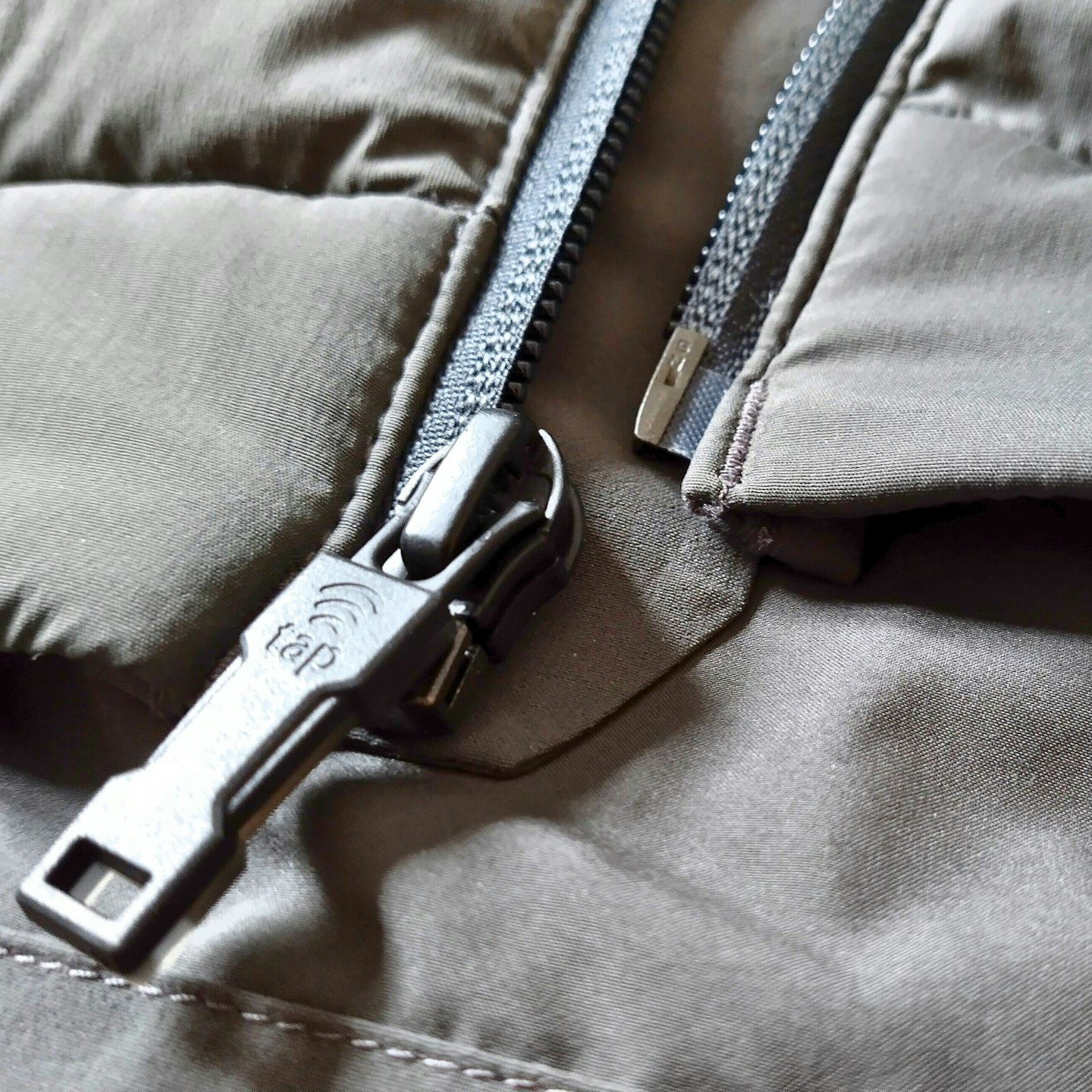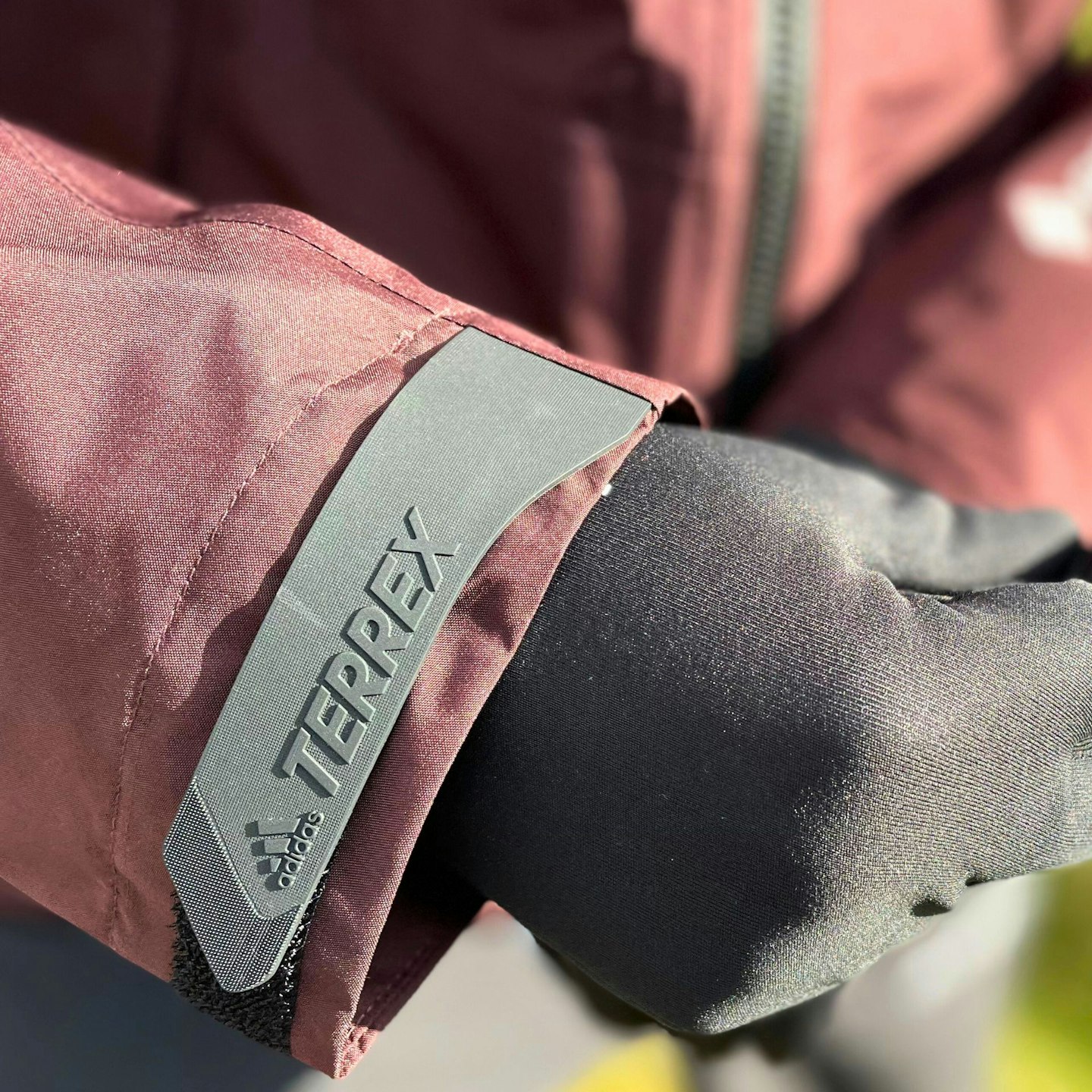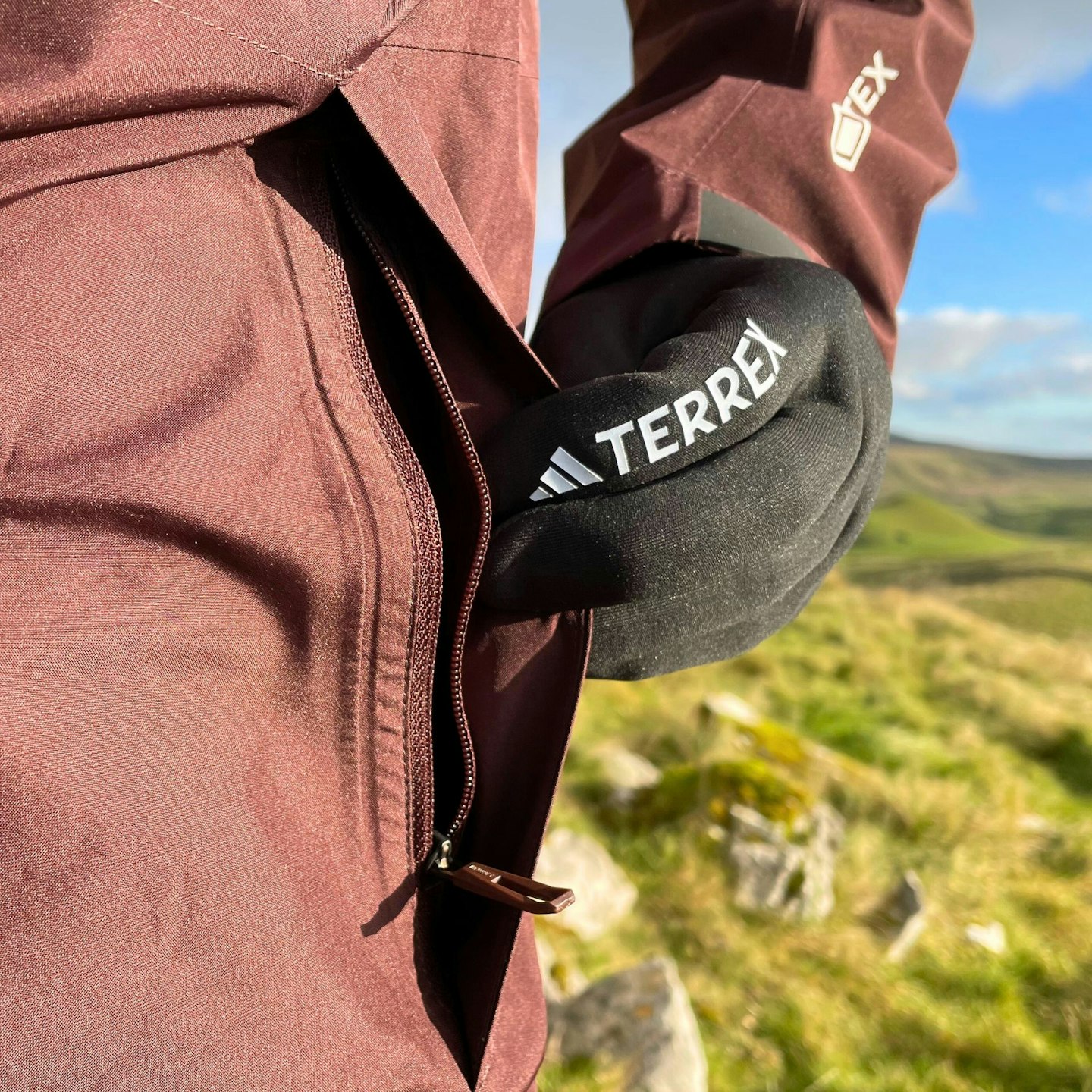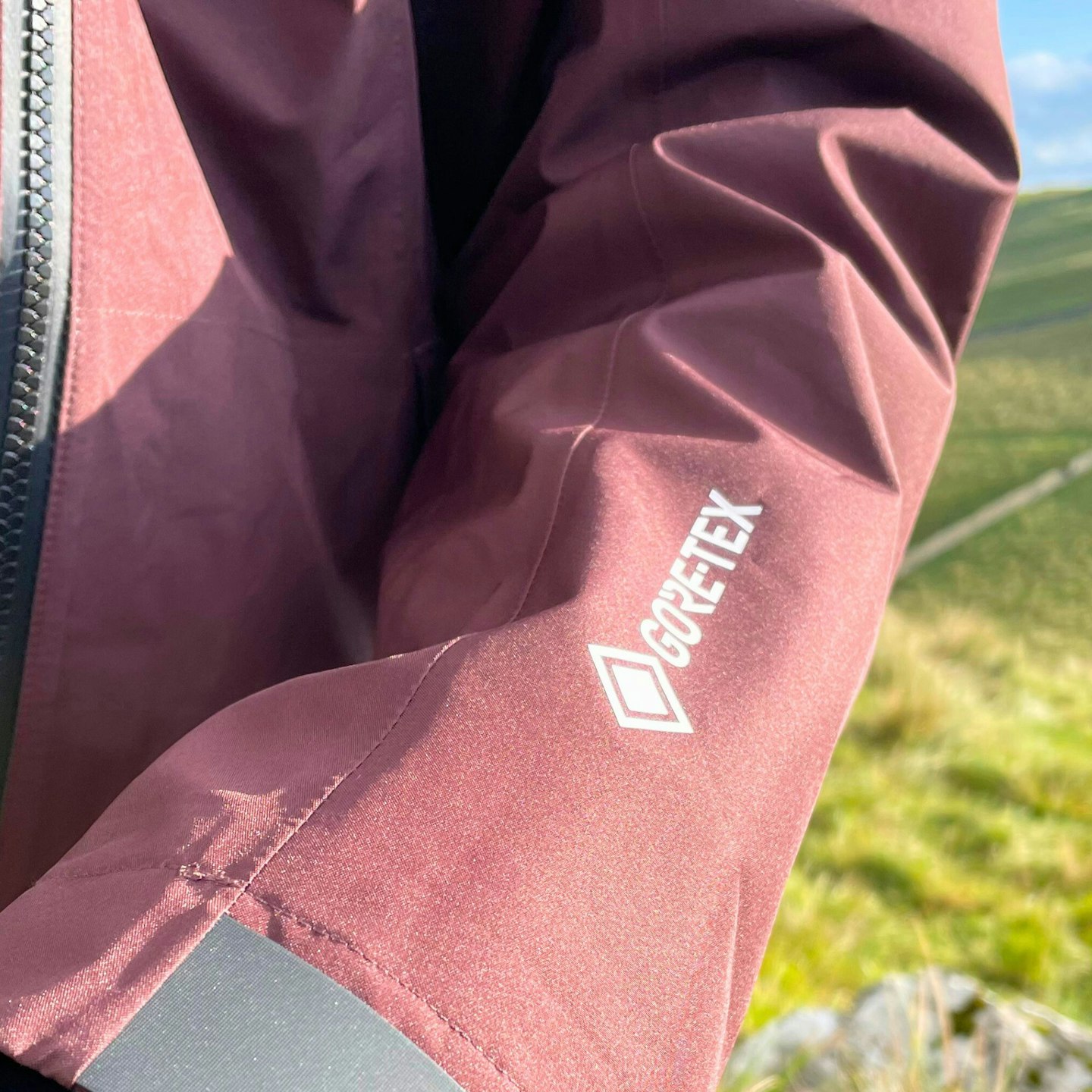Hiking jackets, from waterproof jackets to fleeces, are what people tend to grab first when putting together their hiking wardrobe.
Hiking jackets vary a lot both in performance, purpose, and design. It's therefore important to learn about the different types of hiking jacket, and which are best for your particular needs.
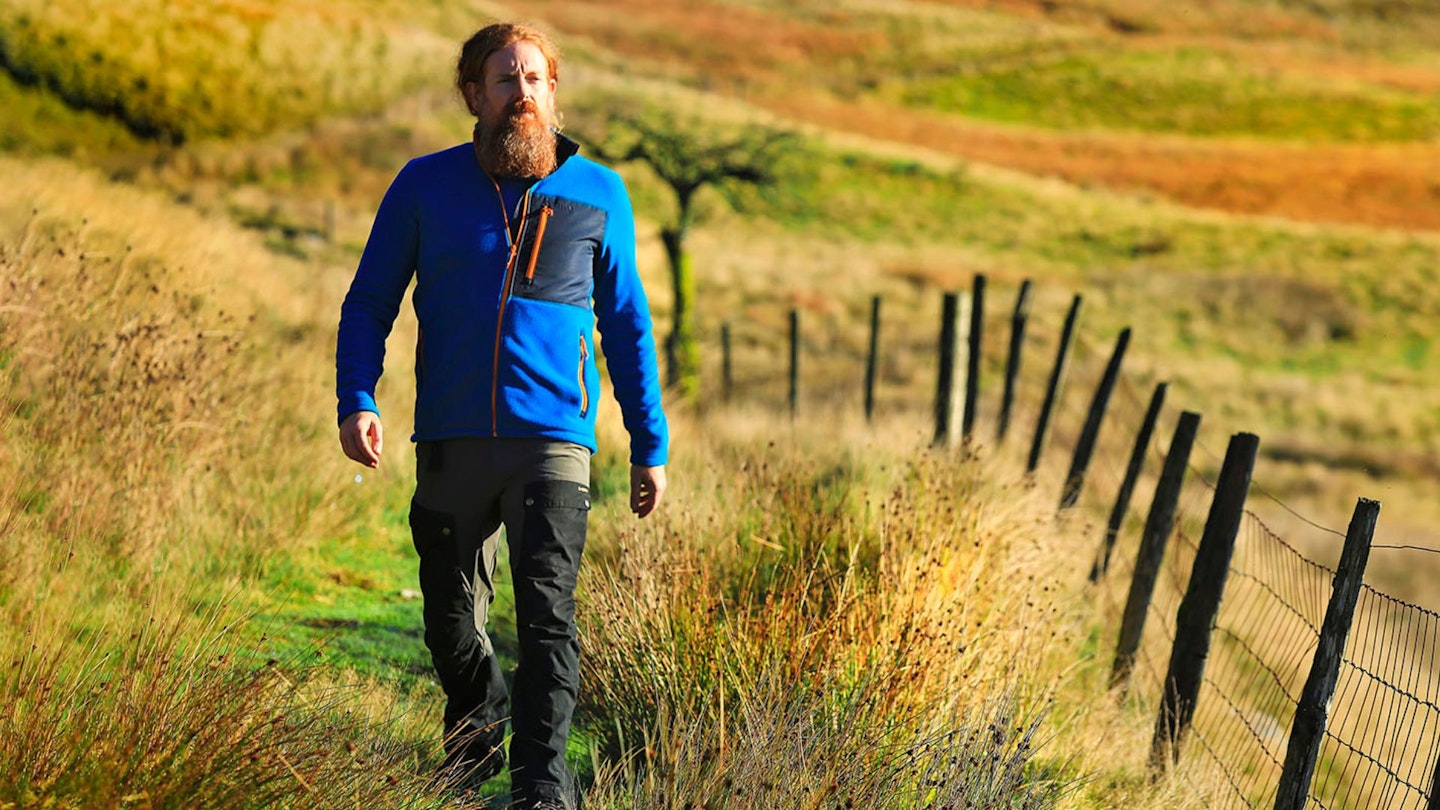
Best hiking jackets at a glance
Best waterproof hiking jacket: Mountain Equipment Makalu Jacket
Best fleece jacket: Craghoppers CO2 Renu Half Zip Fleece
Best down insulated jacket: Artilect Divide Fusion Stretch Jacket
The term hiking jacket covers a broad range of garments. It basically means anything that isn't a base layer. A quick canter through the common types of hiking jacket includes fleeces, softshell jackets, insulated (synthetic and down), and waterproof jackets.
Fleeces, softshells, and lightweight insulated jackets are used either as mid layers in cold conditions and outer layers when it's milder. Meanwhile thicker insulated jackets and hardshell waterproof jackets are used as your outer layer.
Best hiking jackets in detail
Updated back in 2023, the Makalu is the best all-rounder for waterproof jackets right now. It impressed us on all front: fit, features, value, performance, and earning praise for its reduced environmental impact and affordability.
It now uses Gore-Tex ePE, which eliminates harmful PFCs, while delivering durability and functionality you expect of Gore-Tex – truly, discernible differences between ePE and the old ePTFE membrane are negligible.
The Makalu is has a 3-layer construction with a 75D face fabric, which manages to be tough enough for use in winter mountain conditions, yet reasonably lightweight at 520g and comfortable for all-day use.
On test, we found the Makalu offers excellent protection thanks to extended sleeves with Velcro cuffs, and a versatile hood capable of accommodating a climbing helmet while ensuring a snug fit even without one. The hood's reinforced peak effectively repels rain, while integrated cordlocks minimise bulk around the face, enhancing practicality.
Ideal for all avid hikers, the Makalu delivers on performance without breaking the bank, earning it the esteemed 2024 Gear of the Year accolade.
Check out the women's version here
Read our full Mountain Equipment Makalu Jacket review
Pros
- Gore-Tex ePE works brilliantly
- Tough 75D face fabric
- Lighter than many rivals
- Many pockets
- Offers excellent protection
Cons
- No stretch in fabric
| Weight: | 520g (men's L) |
| Fabric: | 75D 3L Gore-Tex ePE w/ PFC-free DWR (28,000mm HH) |
| Men's sizes: | S - 3XL |
| Women's sizes: | 8 - 16 |
To avert catastrophic climate change carbon emissions must be curtailed, which in part means a reduction in the production of carbon-intensive goods or finding ways to produce them with minimal carbon output, or ideally, none at all.
However, achieving this is no easy feat. The growing demand for new goods presents a challenge, as does manufacturing without carbon emissions. But a promising solution lies in harvesting and repurposing potential pollutants instead of releasing them into the atmosphere.
Surprisingly, a recent innovation emerged as a powerful tool in the outdoor industry's fight against emissions: the CO2 Renu Half Zip Fleece by Craghoppers. While the fleece jacket has long been celebrated as a staple in every hiker's wardrobe, this particular iteration stands out.
Apart from delivering the warmth and versatility characteristic of fleece jackets, it distinguishes itself by actively being partially made from fibres made from captured CO2 emissions. Despite being competitively priced among mid-layer options, it represents a significant step towards our road to net zero. Thus, it rightfully earned one of our Gear of the Year awards for 2024.
Check out the women's version here
Read our full Craghoppers CO2 Renu Half Zip Fleece review
Pros
- Well-priced
- Sustainable innovation
- Full zip option available
Cons
- Not a 'technical' fleece for more arduous adventures
| Weight: | 305g |
| Fabric: | 100% polyester (70% recycled, 30% Bio3 carbon smart polyester) |
| Men's sizes: | S - 2XL |
| Women's sizes: | 8 - 20 |
Softshells are excellent mid-layers and outer layers, sitting in between fleeces and hardshell jackets. Haglöfs' Roc Sight Softshell is one of the more technical softshell jackets around that show its credentials when used for more challenging hillwalking, scrambling and mountaineering routes in mixed weather.
We like the durable, protective feel, and how it has decent length in the arms and body. It has a two-layer construction, which offers stretch and impressive weatherproofing. This is boosted further by a hem drawcord, Velcro cuffs, and an adjustable hood. It cuts out wind completely and fends of moderate rain.
The flip side to all this durability and weatherproofing is that it's on the heavier side for softshells and can get pretty warm when you are working hard. But to help address this, there are big, zipped torso vents.
There are three pockets. Two big Napoleon-style chest pockets remain accessible if you’re wearing a rucksack or a climbing harness. There’s a zippered inner pocket too.
Check out the women's version here
Pros
- Protective and sturdy
- Flexible
- Well cut
- Great features
- Haglöfs a Fair Wear Foundation member
Cons
- Overkill for casual hikers
| Weight: | 590g |
| Fabric: | Bluesign-approved 2-layer stretch (85% recycled nylon, 15% elastane) with tricot backer (52% recycled nylon, 20% recycled polyester, 19% polyurethane, 9% elastane) w/ PFC-free DWR |
| Men's sizes: | S - 2XL |
| Women's sizes: | XS - 2XL |
We were taken aback by the Hengill during our testing. It's lightweight, soft - it feels more like an everyday hoody than a jacket. So we weren't ready for what it can do, even when it's windy and damp. Maybe we shouldn't have been surprised. Icelandic brand 66° North knows a thing or two about insulation and has applied some impressive know-how into this high-performing yet surprisingly lightweight jacket.
Constructed from slightly stretchy nylon, the primary fabric is cosy and results in a snug and comfortable fit that truly shines when you venture into the outdoors. The outer material effortlessly repels wind and keeps a fair amount of precipitation at bay.
We found the synthetic insulation offers a blend of breathability and moderate warmth, which is enhanced in no small part by the jacket's weather-resistant exterior. It's equally at home as an outer layer in cooler conditions or as a reliable mid-layer beneath a hardshell when tackling winter mountain excursions.
There three external pockets – two zipped handwarmer pockets, and a third on the chest. We liked the elasticated cuffs and extremely smooth one-way main zip.
When it comes to critiques, there's little to nitpick about the Hengill. While it does come with a relatively higher price tag, its versatility goes a long way in justifying the investment. What's more, 66° North stands by its gear, offering repair services, and is B Corp certified, highlighting their ethical business practices. However, if you're in the market for a more heavily insulated winter jacket, you may want to explore other alternatives.
Check out the women's version here
Pros
- Versatile insulation
- Breathable
- Super smooth main zip
- Good weather resistance
- Repairs offered by 66° North
Cons
- Hood not adjustable
| Weight: | 420g |
| Fabric: | Nylon (93%, 7% elastane) w/ DWR |
| Insulation: | Thermore |
| Men's sizes: | S - 2XL |
| Women's sizes: | S - 2XL |
For the warmth and weather protection this technical mountain jacket offers, it is remarkable value compared to many of its rivals.
Mountain Equipment has managed this firstly by using synthetic rather than down insulation, and secondly by relying on its own materials rather than those from specialists like PrimaLoft.
This means the outer shell is Mountain Equipment's own 40D Drilite Loft nylon, which we found to be windproof and able to fend off light rain and snow. Then beneath is recycled 115gsm polyester insulation.
Weighing in at 600g, it's heavier than many winter down jackets, which offer better warmth-to-weight ratios. But that's not enough to derail this excellent jacket.
We liked the fit of the Shelterstone because of its long sleeves, dropped rear hem, and collar that zips all the way up to the nose. These give good coverage, and the hood can be fitted over a helmet but still cinches in without one thanks to three-way adjustment.
There's little to mark the Shelterstone down on. You can get more warmth for 600g, but expect to pay a lot more for it.
Check out the women's version here
Pros
- More affordable than many rivals
- Works as standalone layer or under a hardshell
- Good weather resistance
- Mountain Equipment a Fair Wear Foundation member
Cons
- Not the best warmth-to-weight ratio
| Weight: | 600g |
| Fabric: | 40D Drilite Loft nylon w/ PFC-free DWR |
| Insulation: | Recycled Polarloft |
| Men's sizes: | S - 2XL |
| Women's sizes: | 8 - 16 |
Features for the sake of features can leave a garment suffering from the law of diminishing returns. The Artilect Divide Fusion Stretch Jacket is one of the most feature-heavy insulated jackets we’ve tested so far with a price to match. It’s therefore easy to be sceptical. But it has wowed us by bearing features and tech that make a tangible difference in the field.
The most obvious of these is the hydrophobic down treatment. It’s Allied Down’s ExpeDRY treatment which uses FUZE technology. That’s some fancy lingo but in essence it’s a non-toxic, chemical-free means of making the down hydrophobic by – and this is genuinely true – bonding gold particles to the down, which boosts moisture evaporation. So, yes this jacket has gold in it, but we’ve found it works a treat.
Other clever touches to this jacket we like include the stretchy wool side panels, that aid comfort and breathability. The main fabric also has a novel DWR called EMPEL. Like the down treatment, it’s more eco-friendly and higher-performing than the industry standard. We got caught in some heavy rain in this jacket and the fabric kept water at bay for about 15 minutes, which is pretty decent for a non-waterproof jacket.
There’s so much to discuss with this jacket, but crucially, it boils down to a high-performing insulating layer for almost any scenario.
Check out the women's version here
Read our full Artilect Divide Fusion Stretch Jacket review
Pros
- Innovative approach to water-repellency
- Versatile
- Sustainable
- Highly functional yet stylish
Cons
- Not worth it for casual hikers
| Weight: | 400g |
| Fabric: | Bluesign-approved 20D Toray fabric w/ PFC-free GTT EMPEL DWR; 60gsm Lavalan European Wool |
| Insulation: | RDS 700-fill down w/ PFC-free ExpeDRY hydrophobic treatment featuring FUZE |
| Men's sizes: | XS - 2XL |
| Women's sizes: | XS - XL |
We found this long named Adidas rain jacket easy to like as a reliable, lightweight hiking jacket.
Because it uses a Gore-Tex membrane it has a very high level of waterproofing and can keep downpours at bay. But by using a 2.5-layer construction instead of the more durable 3-layer approach seen on a lot of higher end waterproof hiking jackets, the price is more attractive than most Gore-Tex waterproofs.
The Terrex Xperior Gore-Tex Paclite fits nicely as a regular fit. It's not especially flattering but is easy to layer with, which is what really matters. We also liked how the main zip puller and Velcro cuff tabs were quite chunky, making them quite durable and easy to use with gloves.
There are some features missing that you'd see on many competitors. For example, there are no underarm zipped vents, two-way main zip, or an especially good hood peak. The hand pockets can be obscured by a backpack's hipbelt, too.
Check out the women's version here
Pros
- Lightweight
- High level of waterproofing
- Chunky main zip puller and cuff tabs
- Good value for Gore-Tex
Cons
- Not the best pockets
- No rear hood toggle adjustment
| Weight: | 370g |
| Fabric: | Recycled polyester and 2.5-layer Gore-Tex Paclite w/ PFC-free DWR (28,000mm HH) |
| Men's sizes: | S - 2XL |
| Women's sizes: | XS - XL |
Hiking jackets: what you need to know
Layering
In the onion-style layering system that works best for hiking, you have your base layer, mid layer, and outer layer. In a broad sense, you can consider a 'hiking jacket' to mean any mid or outer layer. This means you have a large range of insulated, non-insulated, waterproof, and non-waterproof options.
Depending on the conditions in which you're hiking (i.e., temperature, intensity, etc.), build your layering system accordingly. Layering is all about temperature regulation. Therefore, your layering system for winter will be different to your summer one; likewise with high-intensity hikes compared with leisurely peak-to-pub walks.
What is the best type of hiking jacket?
There is no universal answer to this. It depends entirely on your personal requirements, so think carefully about what it is you need. Make a requirement list if you need to. Does the jacket need to be waterproof? Highly breathable? Lightweight? Insulated? Tough? It's all down to your demands.
Armed with specific requirements, you can start narrowing down your options. For example, you know you need a lightweight, breathable mid-layer to go under a waterproof jacket. Fleeces, merino, and softshells are great candidates for this. Check out our hiking jacket characteristic breakdown below to help you.
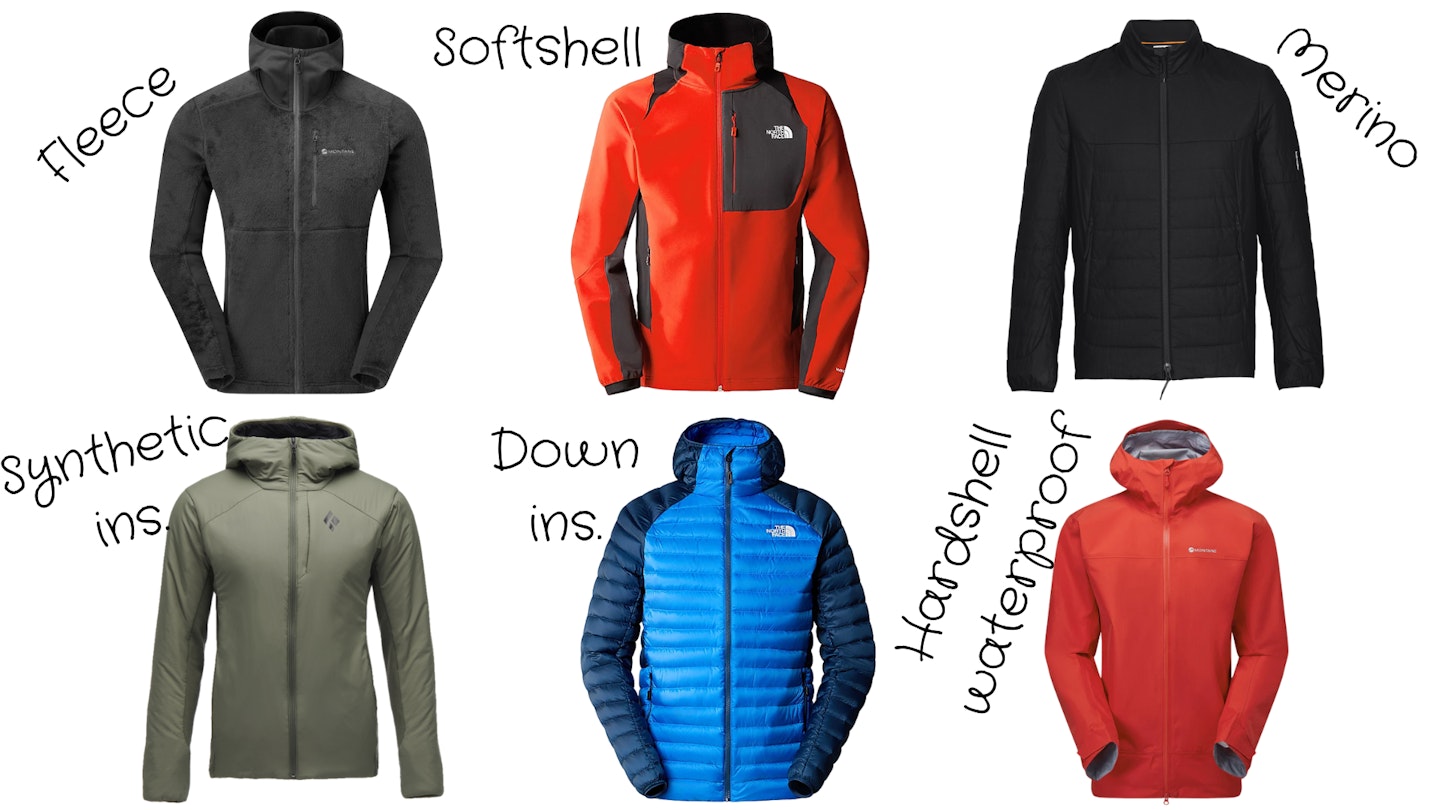
Fleece jackets: Big range of weights, breathable, fast drying, value, big range of styles, not usually eco-friendly
Softshell jackets: Wind and water-resistant, breathable, stretchy, big range of weights, versatile
Merino jackets: Breathable, temperature regulating, anti-odour, works when wet, expensive
Synthetic insulated jackets: Insulates when damp, inexpensive compared to down, bulkier than down
Down insulated jackets: Best warmth-to-weight ratio, breathable, highly compressible, big range of ‘thicknesses’, slow drying
Waterproof jackets: Weatherproof protection, varying waterproof ratings, breathability, weights, and durability
How do you clean a hiking jacket?
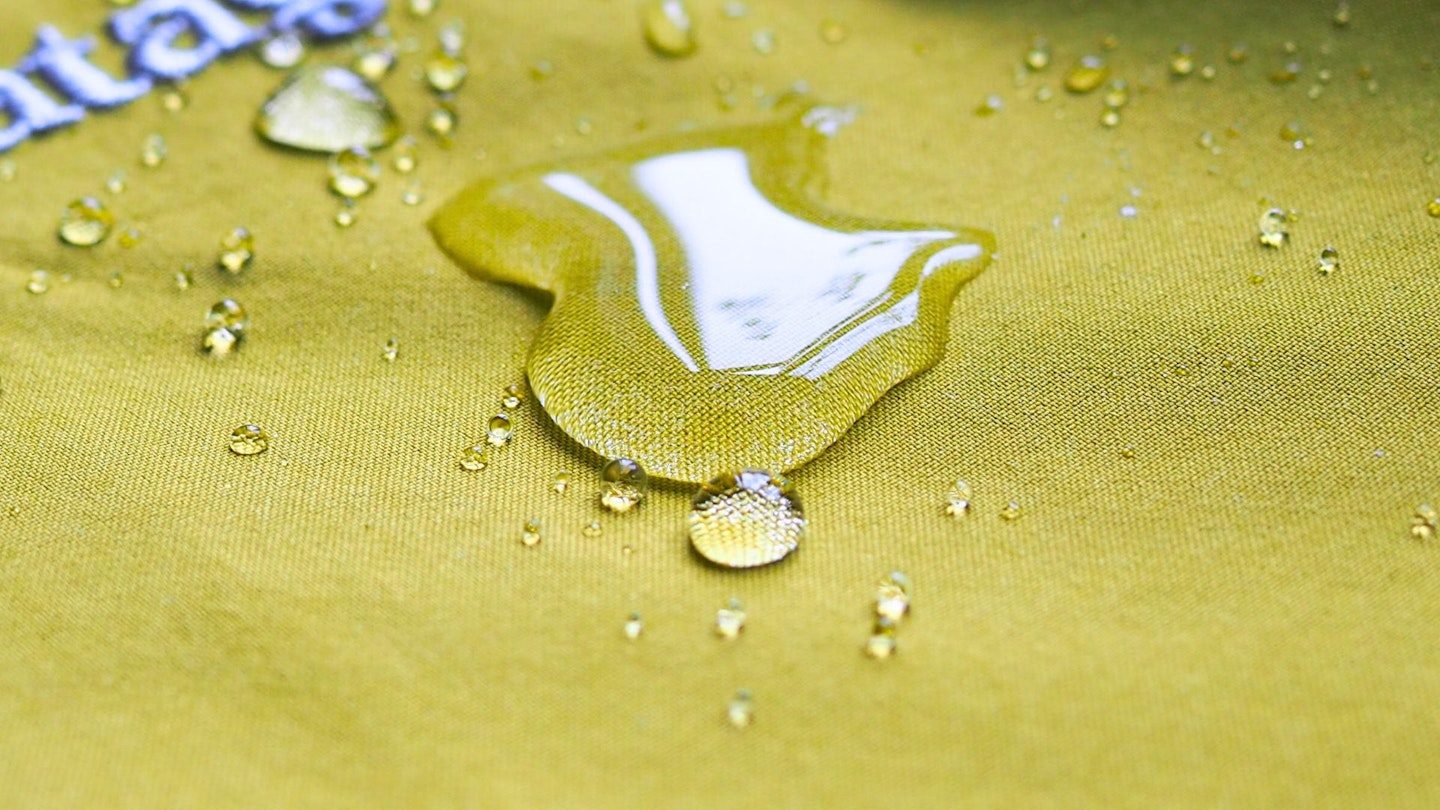
Because most hiking jackets use high-performing fabrics and have water repellent coatings, they require different cleaning products than your everyday clothes. Brands like UK-based Grangers produce a range of effective, eco-friendly products ideal for your hiking gear. Another UK brand called Nikwax is one we also highly recommend.
Whether applied by spray, sponge, or added to your washing machine, these products are very easy to use.
Cleaning your gear regularly maintains the fabrics in top condition, and free from sweat and dirt, which keeps them breathable, water repellent (if applicable), and prolongs the life of your gear.
How to choose the best hiking jacket
Breathability vs weatherproofing: While a good level of wind- and waterproofing is desirable in shell layers which form the outer face of your protection, for mid-layers, it’s more important that they are breathable, allowing moisture from your sweat to escape without making you feel clammy or cold.
Warmth: Hiking jackets come in a variety of forms, from thin fleece to thicker insulated fabrics. Consider the time of year, the intensity of the activity, and your own tendencies to run hot or cold when deciding how warm you need your mid-layer to be.
Bulk: Whether worn under as a mid-layer or outer layer, it’s important to try and keep weight as low as possible. This is reasonably easy in summer but harder for winter jackets, which are naturally heavier. That said, brands are making some impressively lightweight winter gear these days, and you can consider factors such as high loft down to get a lighter jacket.
Fit & stretch: A snug, close fit works better for layering but can feel restrictive unless the material has a good level of stretch. This is particularly important for more upper-body-intensive activities such as scrambling and climbing. With a waterproof jacket, you might find a slightly looser fit is advantageous for layering underneath it.
Venting with zips: Pull-over jackets may only have a short zip, while other jackets will undo halfway or all the way down, allowing more warm air to escape if required. Side or pit zips are very helpful for ventilation too.
Quick drying: Part of a mid-layer’s ability to keep you comfortable is how quickly it dries. It should not only wick your sweat rapidly but also get rid of it pronto. Saturated jackets rapidly drain your body of heat and cause problems. Fast drying is also helpful if you’re caught in a sudden downpour before you can get your waterproof on.
Gilets: Unless you suffer from particularly cold arms or hands, a sleeveless mid-layer may be the best option. It will keep your body warm without increasing bulk within the arms of your shell layer.
How we test hiking jackets
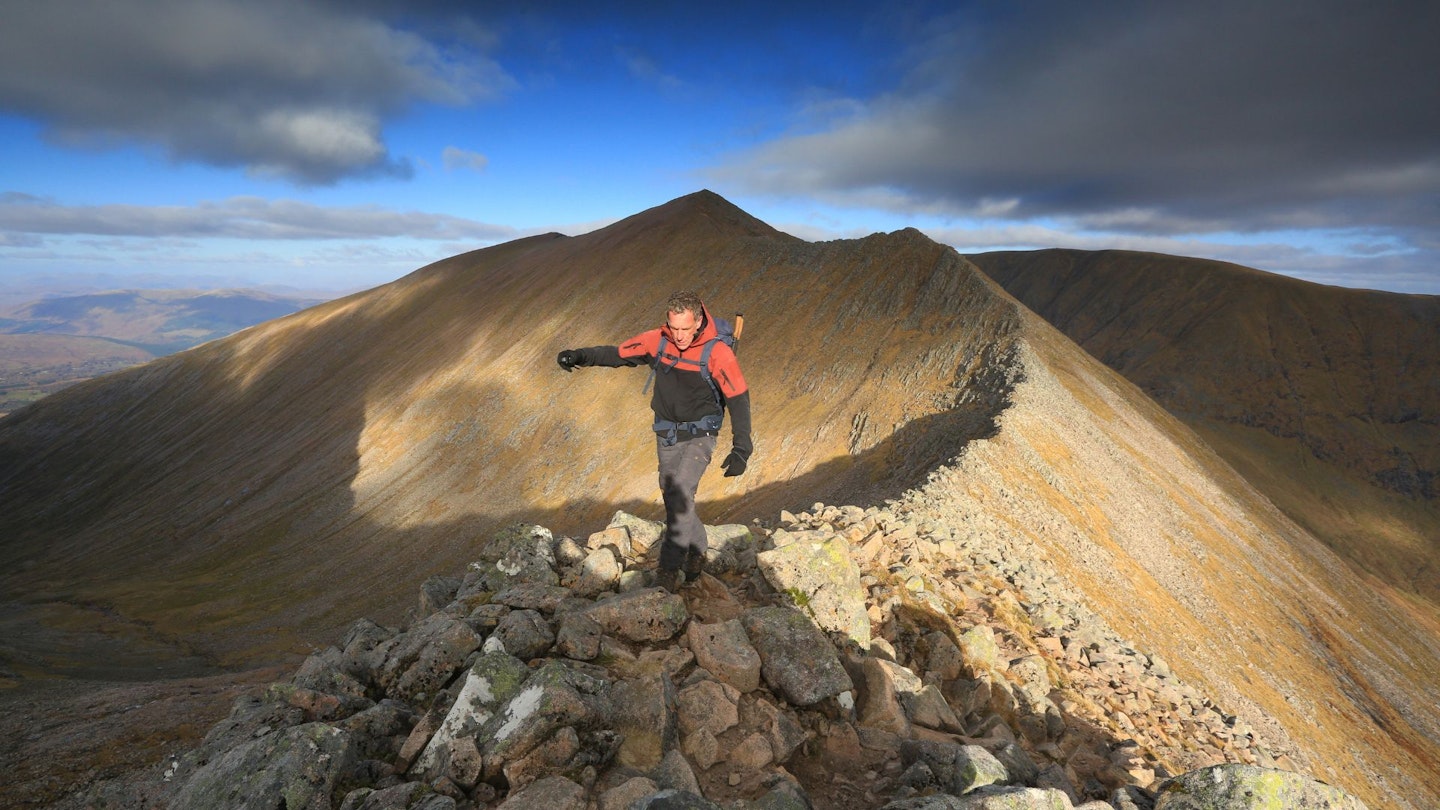
The hiking jackets recommended here are a collection of our best tested hiking jackets from across our tests throughout the year.
The type of jackets that we test vary greatly but whether or not they are recommended by us depends on the same set of factors: comfort, performance, durability, value, and sustainability.
We rigorously test all hiking jackets in challenging real world conditions, in places such as the English Lake District and Yorkshire Dales, and the Scottish Highlands.
Our testers are all highly experienced and consumer-focused who always have our audience first in mind.
Meet our team here | Read more on how we test
Get half-price digital OS Maps! Trail and Country Walking magazine members get 50% off an annual subscription to OS Maps for 12 months! Find out more here.
Don't forget to subscribe to the Live For The Outdoors newsletter to get expert advice and outdoor inspiration delivered to your inbox!
Chris Williams is a Digital Content Writer for Live For The Outdoors. He trained as a journalist in New Zealand and has been working on Live For The Outdoors since 2021.

